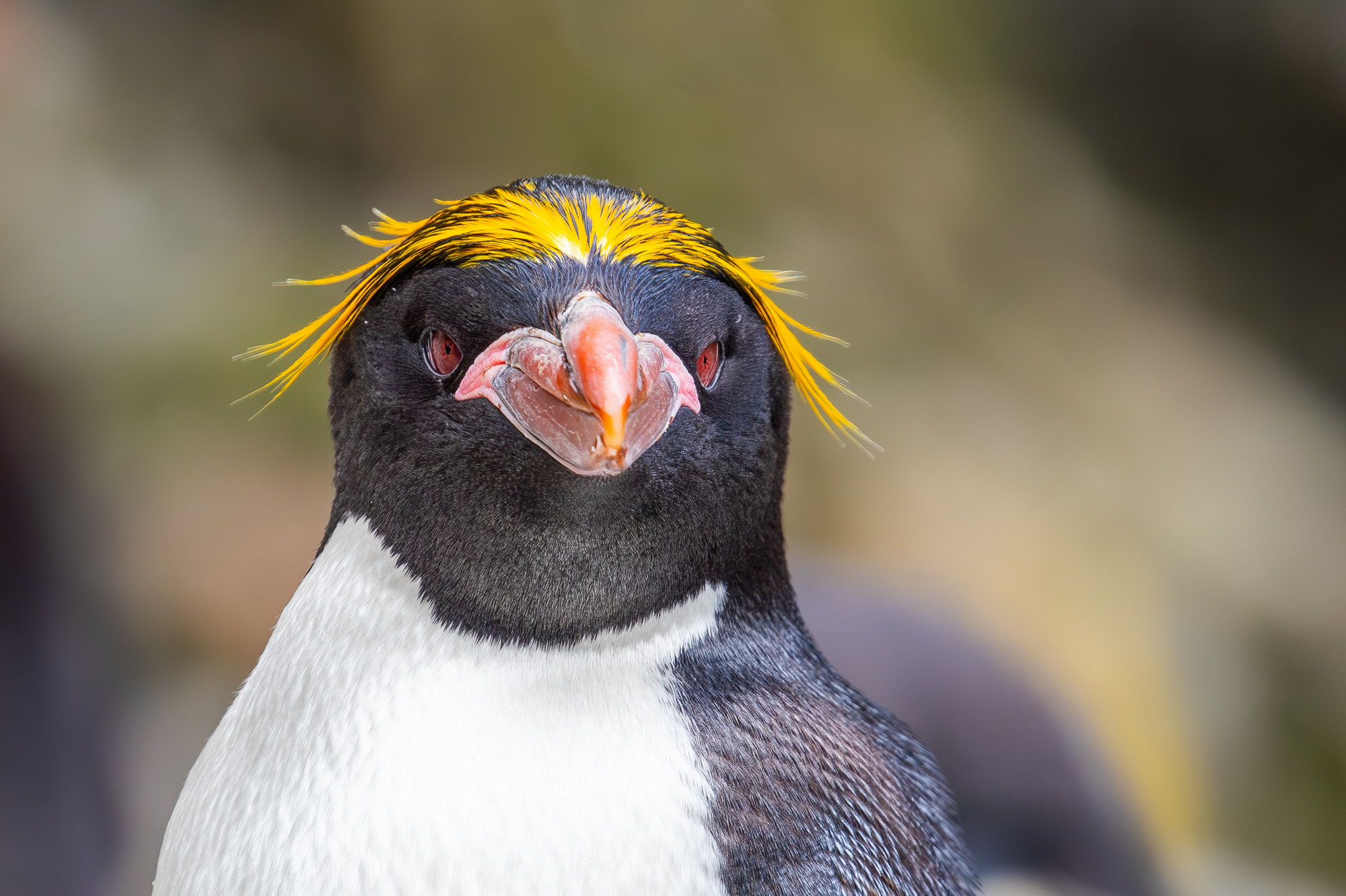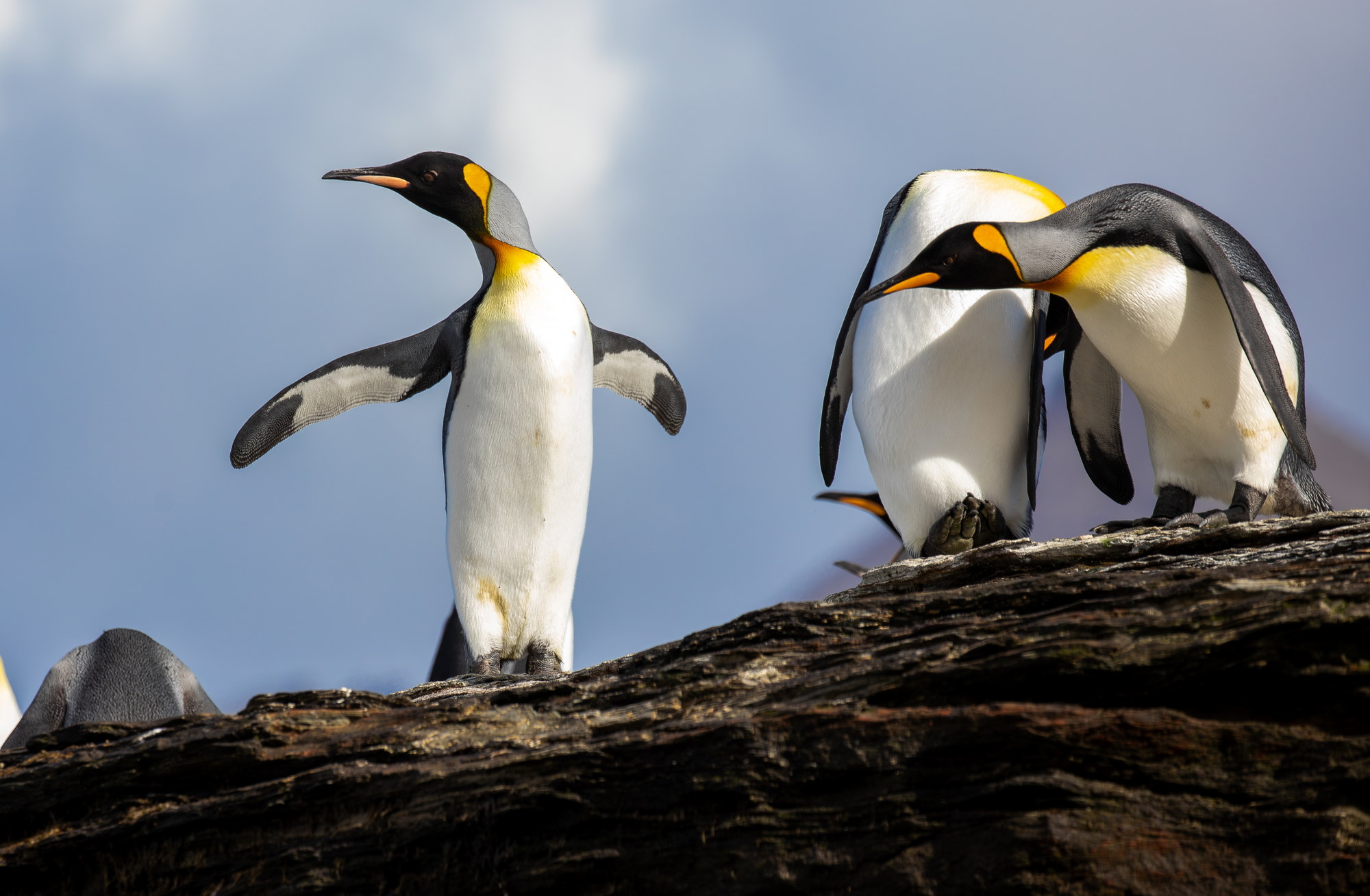The Seventh Continent — a place where there were not too many people, even though cruises do go there. But “not too many” depends on what you compare it to :) So, Antarctica — an expedition cruise and what it’s really like. How much does it cost to visit Antarctica? Will there be penguins? And is there anything there besides snow and ice? I’ll try to answer these and many other questions in this story.
I had wanted to visit Antarctica for a long time, but it always seemed like something impossible to organize — and if possible, then extremely expensive. In the end, it turned out to be both true and not quite true...
- How much does a trip to Antarctica cost
- How to Organize a Trip to Antarctica
- When to Go to Antarctica
- What to Do in Antarctica
- What to Take with You
- Who You Can See on an Antarctic Cruise
- My Experience: 18-Day Cruise — Antarctica, South Georgia, and the Falkland Islands
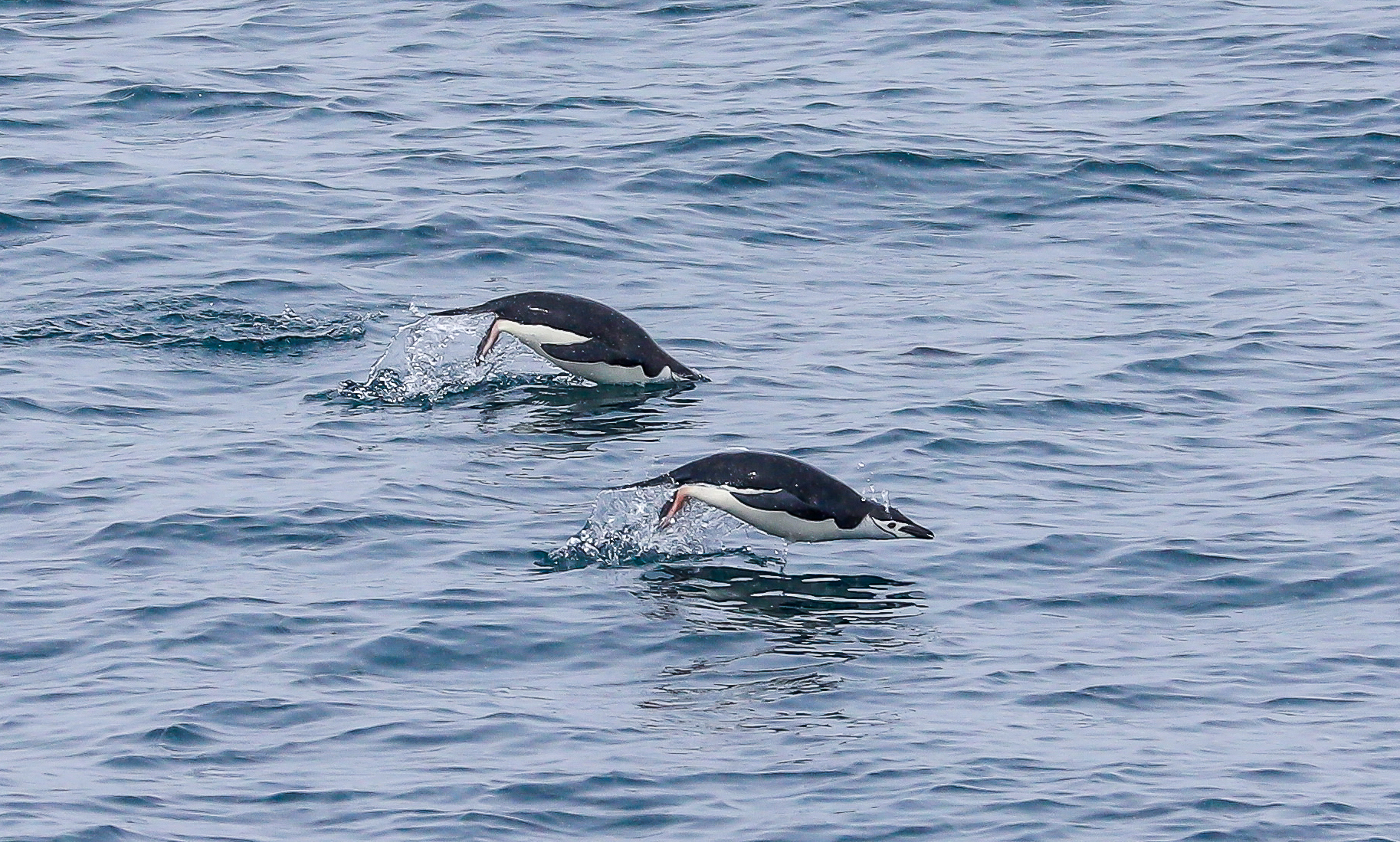
How much does a trip to Antarctica cost
Usually, one thing comes to mind — expensive, or very expensive. And that’s mostly correct, but still… Sometimes you can go relatively cheaply (for Antarctica) — for example, on a regular cruise, since some of them sail along the shores of the Antarctic Peninsula. However, even though that’s comfortable, it’s not the real Antarctica experience. Large cruise ships cannot dock there, and it’s not allowed anyway. So if you’re fine with seeing Antarctica from the window — then a cruise ship might be enough.
The more popular options are either an expedition cruise or a yacht, and both have their pros and cons.
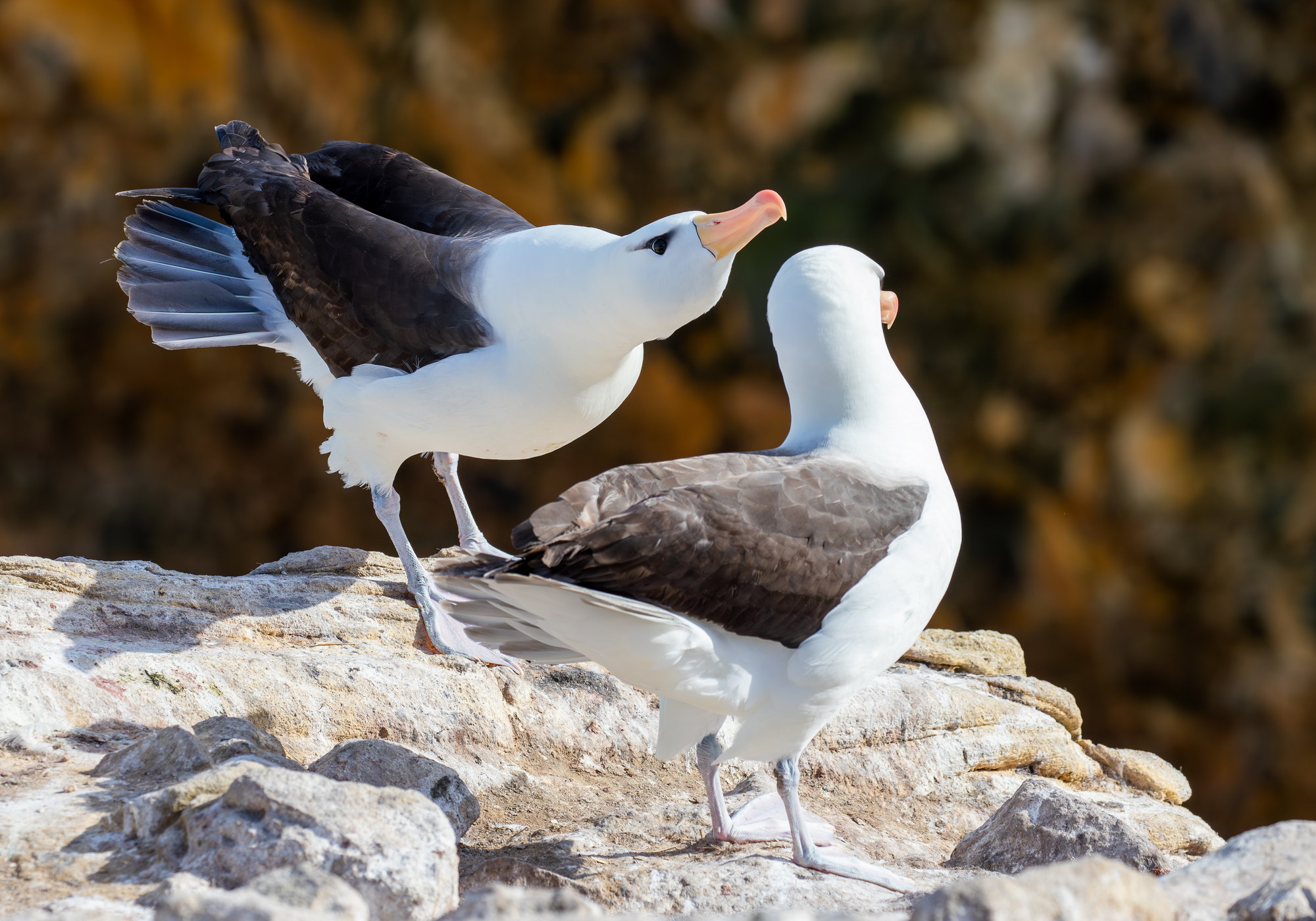
A yacht means fewer people, a lower cost, and the chance to sail through the famous Drake Passage. But there are also downsides: no guarantee of having a cook, you might have to take shifts, landings can be less convenient, and the ship is slower. In the end, you’ll get an unforgettable adventure on a yacht — but with less comfort and less time for sightseeing. Before my trip, I compared the yacht and the expedition cruise options — even crossing the Drake Passage takes yachts two to three times longer. Another point: there are very few yacht trips available.
An expedition cruise — expensive (or not too expensive), but very comfortable. The crew manages the ship, cooks, cleans, tells interesting facts — and you just relax, enjoy the views, take photos, land ashore, and take even more photos.
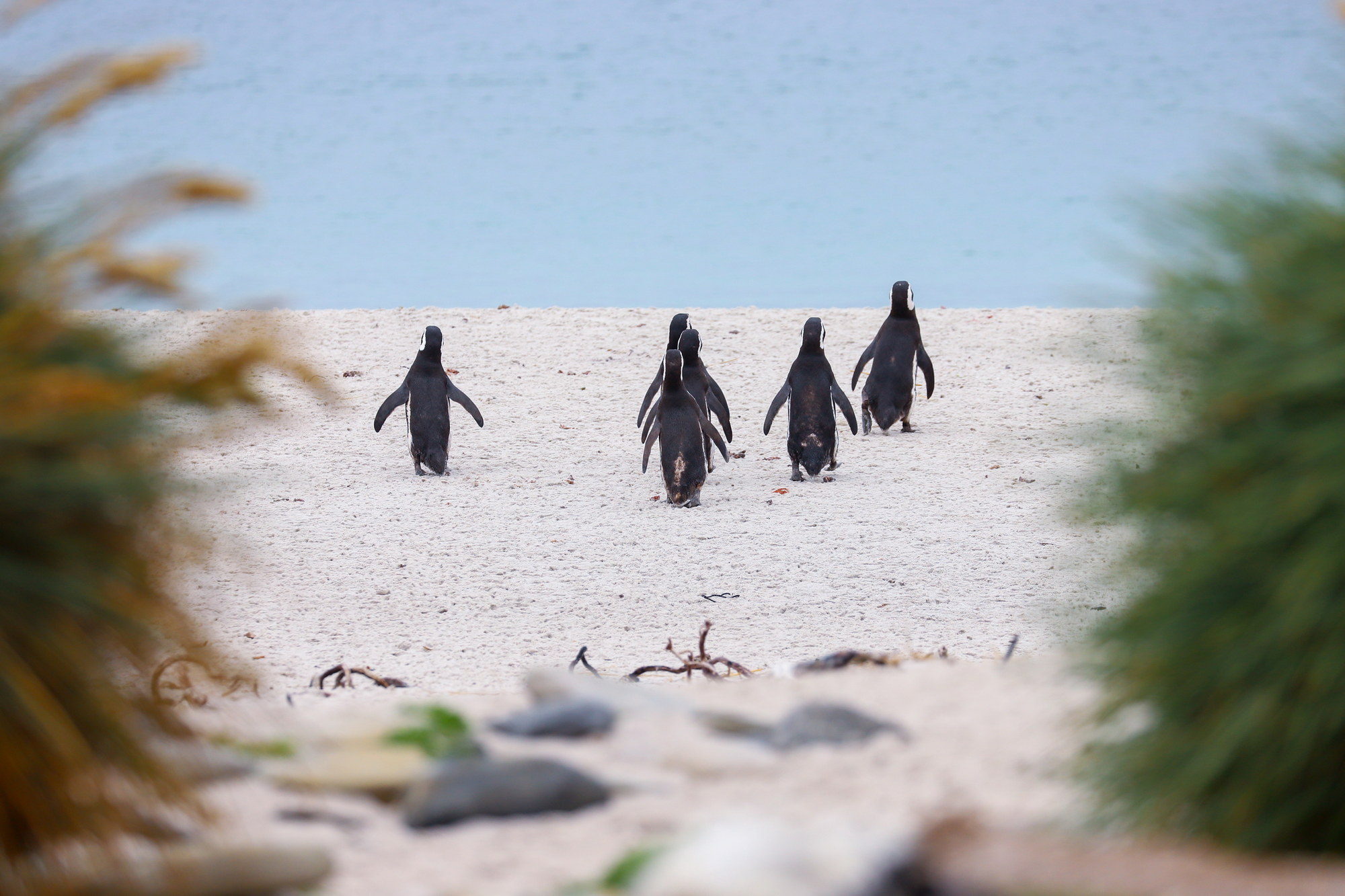
However, this is not the kind of cruise most people imagine. There aren’t dozens of decks or nightclubs; usually, these are smaller ships for about 100–300 passengers. Some larger ones have a jacuzzi or gym, but keep in mind that the bigger the ship, the longer the landing process. In some places, there’s also a limit on how many people can be onshore at once, meaning the bigger the ship, the less time you get on land.
It was with an expedition cruise that I visited Antarctica. So, what about the prices... Even a 10-day trip can differ in cost by three or four times. If you don’t care much about the exact month (it will be the polar summer anyway), you can pack up and buy a tour 2–4 weeks before departure — that’s usually cheaper. Last-minute deals can be quite affordable for Antarctica: around $5,000–$7,000. Some operators even let you buy one or two beds in a shared 3–4 person cabin instead of renting an entire double cabin, which is usually more expensive.
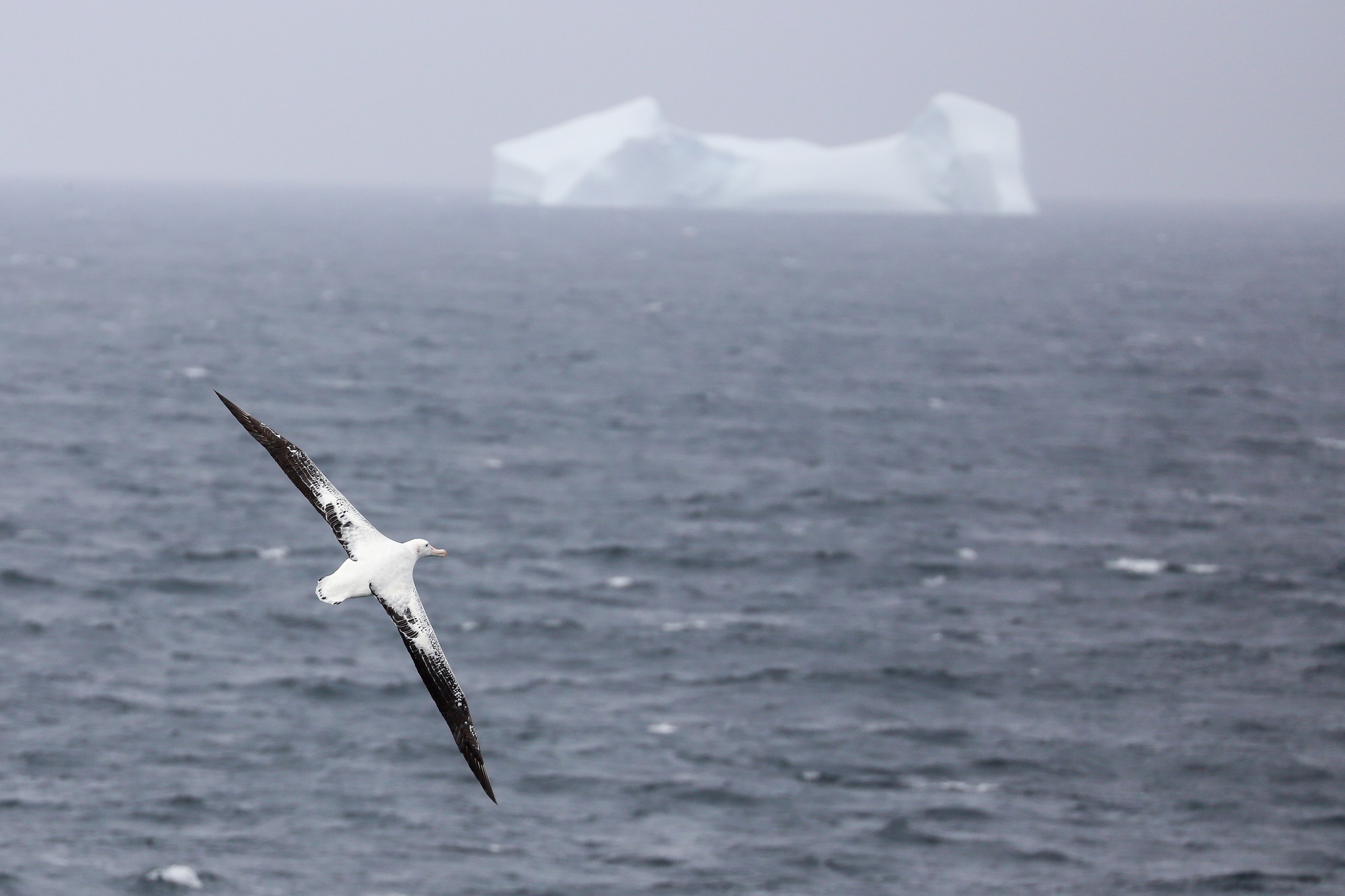
Of course, much depends on the operator — some include branded jackets and alcohol on board, and then prices start from $15,000–$17,000. Many people book tours 2–3 years in advance because they want a specific cabin, season, and operator. But if your main goal is simply to see Antarctica, its landscapes, and wildlife — you can easily go last-minute.
And, of course, there’s another option — to join a scientific expedition for six months or a year. In that case, it’s free, and you can even earn some money. But you’ll need to pass a serious selection process and have the right qualifications.
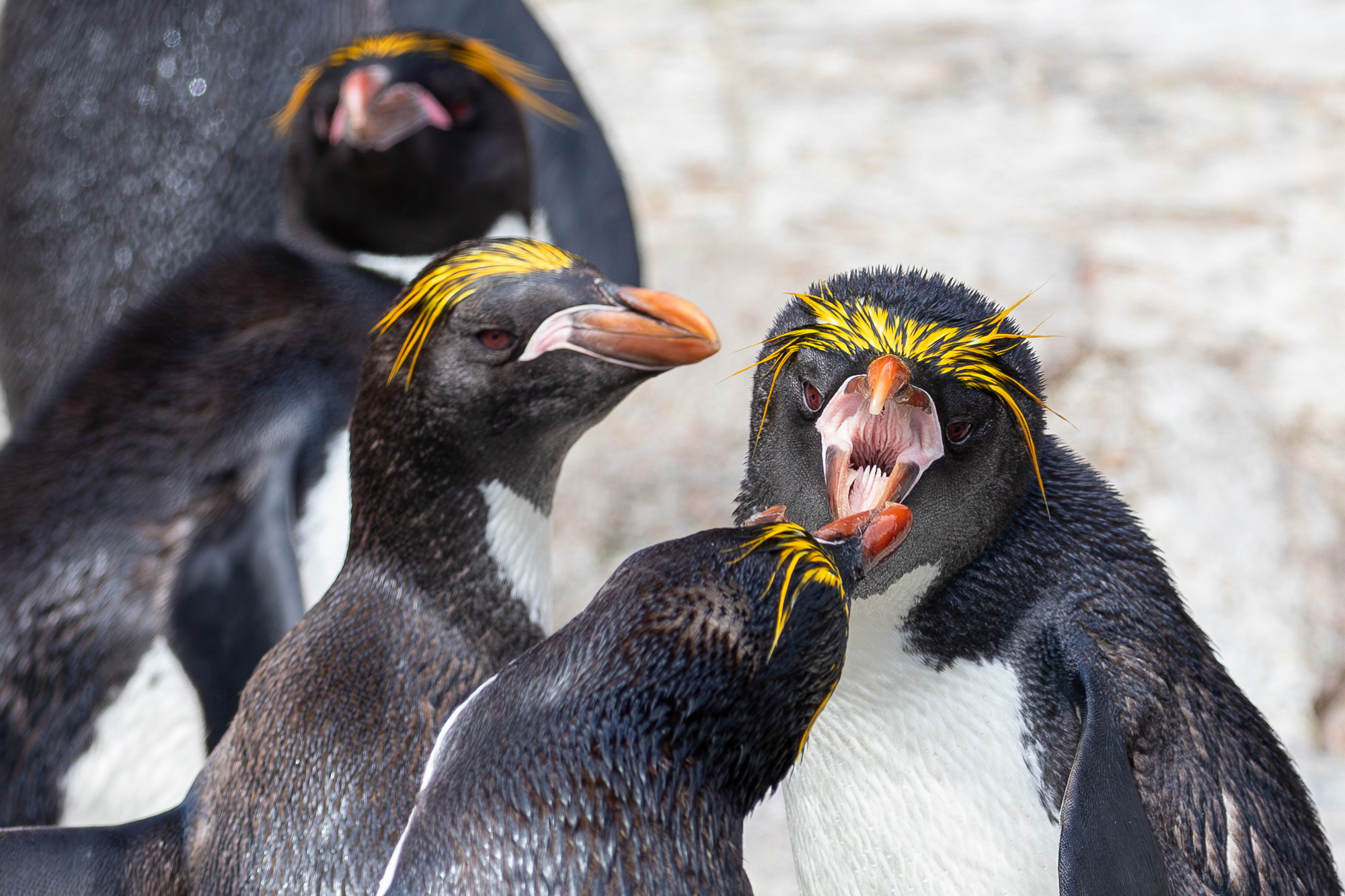
How to Organize a Trip to Antarctica
I will, of course, tell you based on my own experience. I don’t like using travel agents and prefer to arrange my flights myself. So... I had to do some digging to find the actual operators — such as Oceanwide Expeditions, Quark, and Aurora Expeditions — and then I chose a tour directly from them.
Another important thing is to decide where you will depart from. Most tours start from Ushuaia, Argentina, though a few leave from Australia, and sometimes even from South Africa. But if we talk about the majority of tours — it’s definitely Argentina.
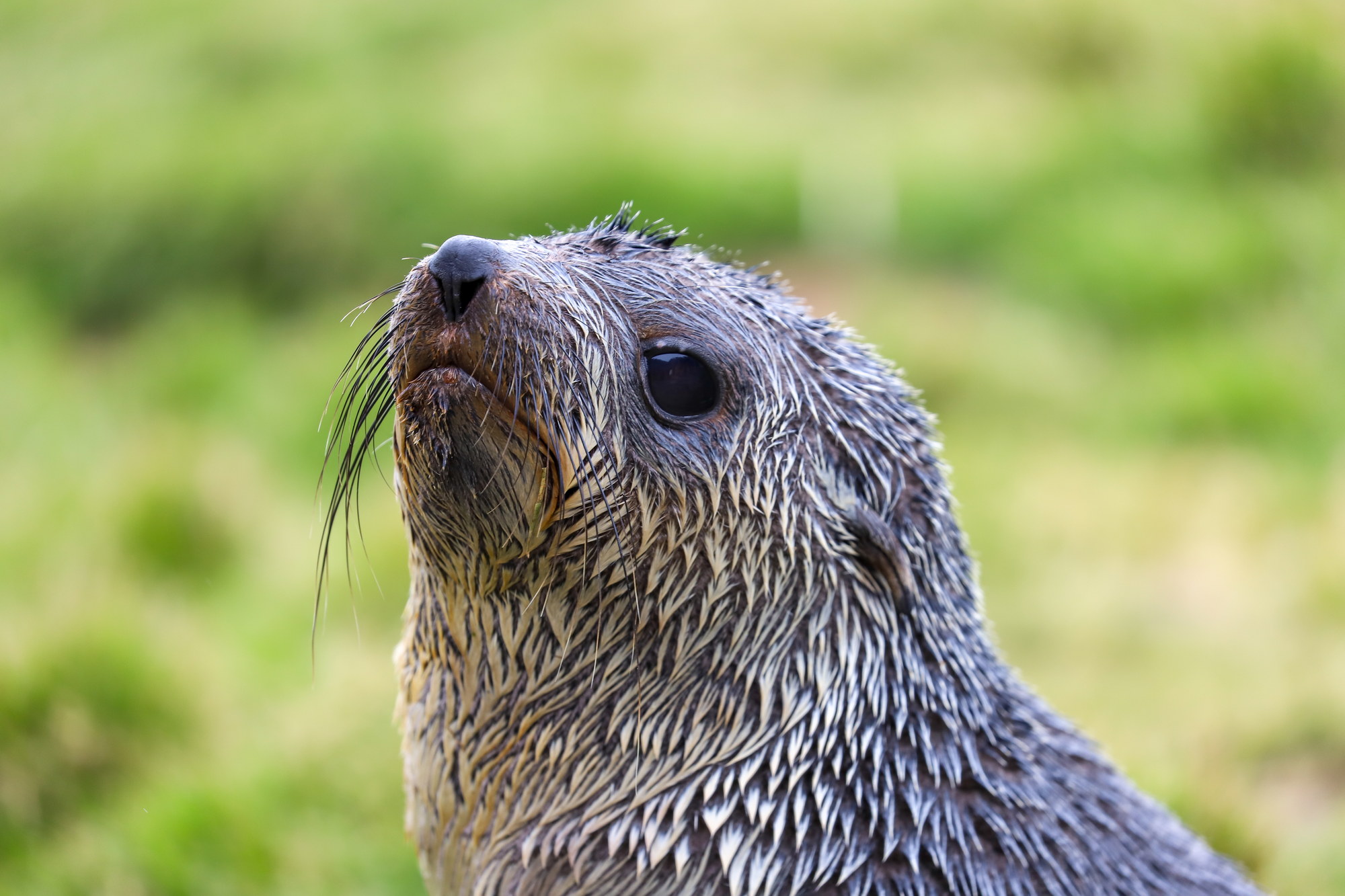
I wanted a longer trip and hoped to see not only Antarctica but also South Georgia and the Falkland Islands. All companies offer such tours, but they differ in conditions, duration, and of course, price. It’s good to answer a few questions in advance:
- How much are you ready to spend?
- How much time do you have?
- What interests you most: landscapes, wildlife, diving, kayaking, camping, or something else?
Every day spent in the open sea is exciting, but not as much as landings or activities like kayaking and zodiac rides. So the cruising speed of the ship also matters, though honestly, they don’t differ much.
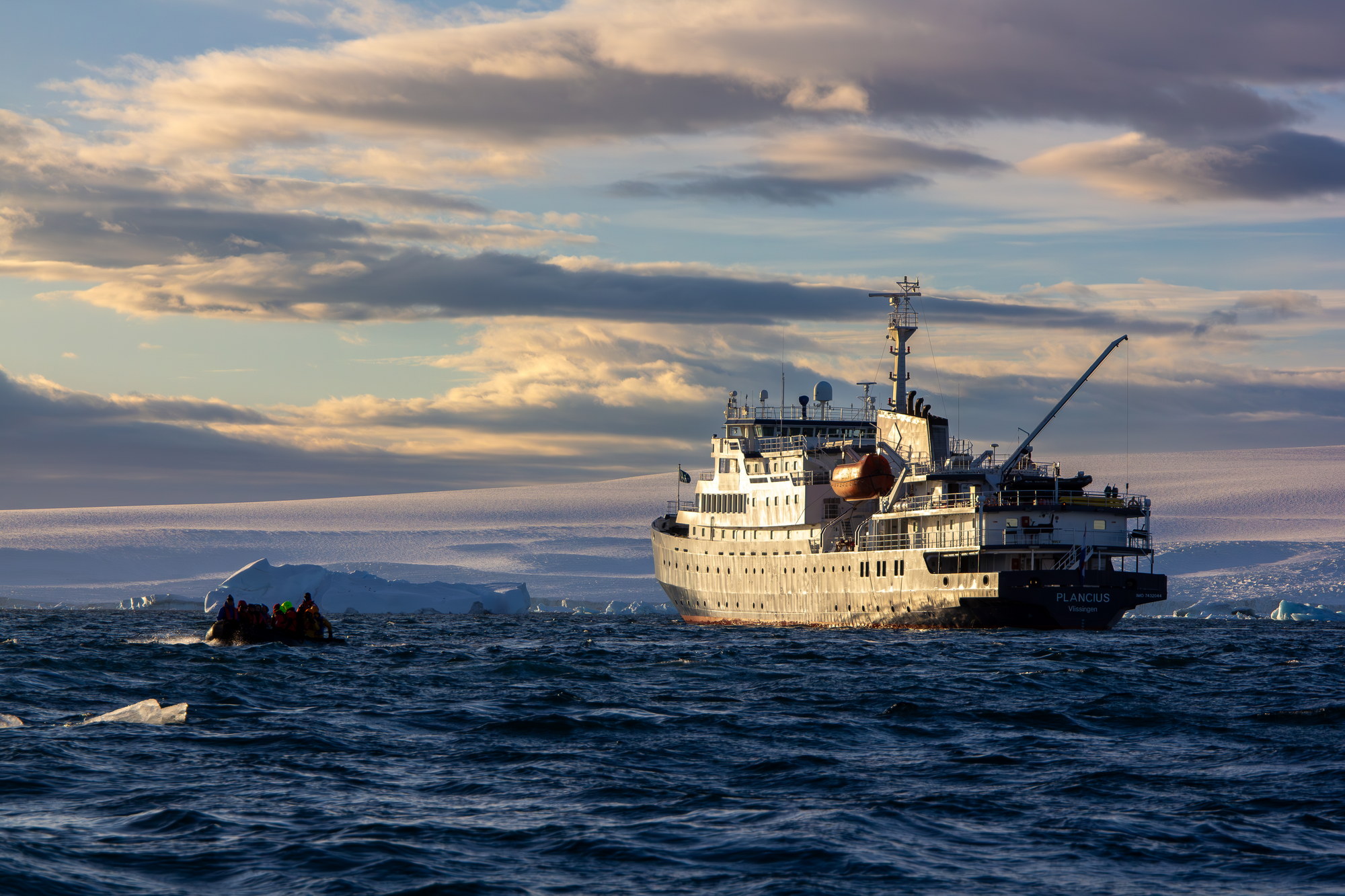
I chose Oceanwide Expeditions — they had the lowest prices, though with less comfort: no jacuzzi or gym. But I decided to accept these “inhuman” conditions! On the other hand, their ships are smaller (some of them) — around 100 passengers. On our trip, there were 98 of us, since some people booked entire cabins for themselves.
My 19-day tour cost $13,500 for a bed in a four-person cabin, and I booked it three months in advance. A year later, I saw the same trip offered a month before departure for $9,500 :(
Once you have chosen a company and a tour, what’s next? You make a reservation, pay a deposit (I just made a regular bank transfer), and wait for the date to pay the remaining balance. In the meantime, you can buy your flights to Argentina.
It’s worth noting that you will most likely fly into Buenos Aires, and from there take a domestic flight to Ushuaia. Make sure to allow extra time — local flights can be delayed or canceled, and anything might happen. Plan to arrive in Ushuaia well in advance — the ship will not wait for you.
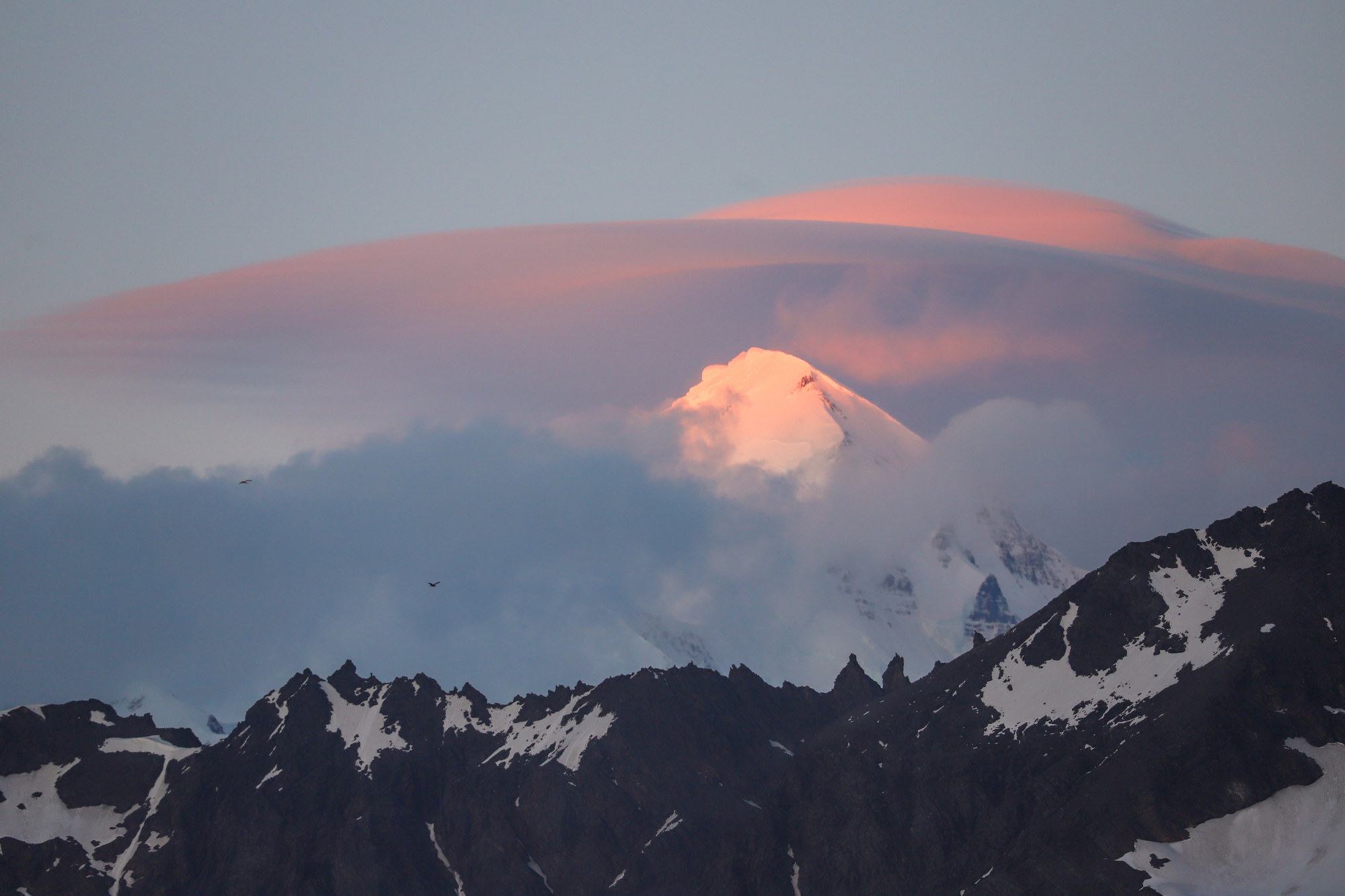
When to Go to Antarctica
Tours to Antarctica start at the end of October or November and continue until early April. During this period, it is summer in the Southern Hemisphere, meaning warmer weather and less ice.
In general, the season lasts five to six months, and during these months, you can see different sides of Antarctica.
In spring (October–November), there are more icebergs and snow. In South Georgia, elephant seals fight for territory, and colonies of king penguins are full of fluffy chicks. Other penguins are still sitting on their eggs. There is also a higher chance of storms, which sometimes makes landings impossible.
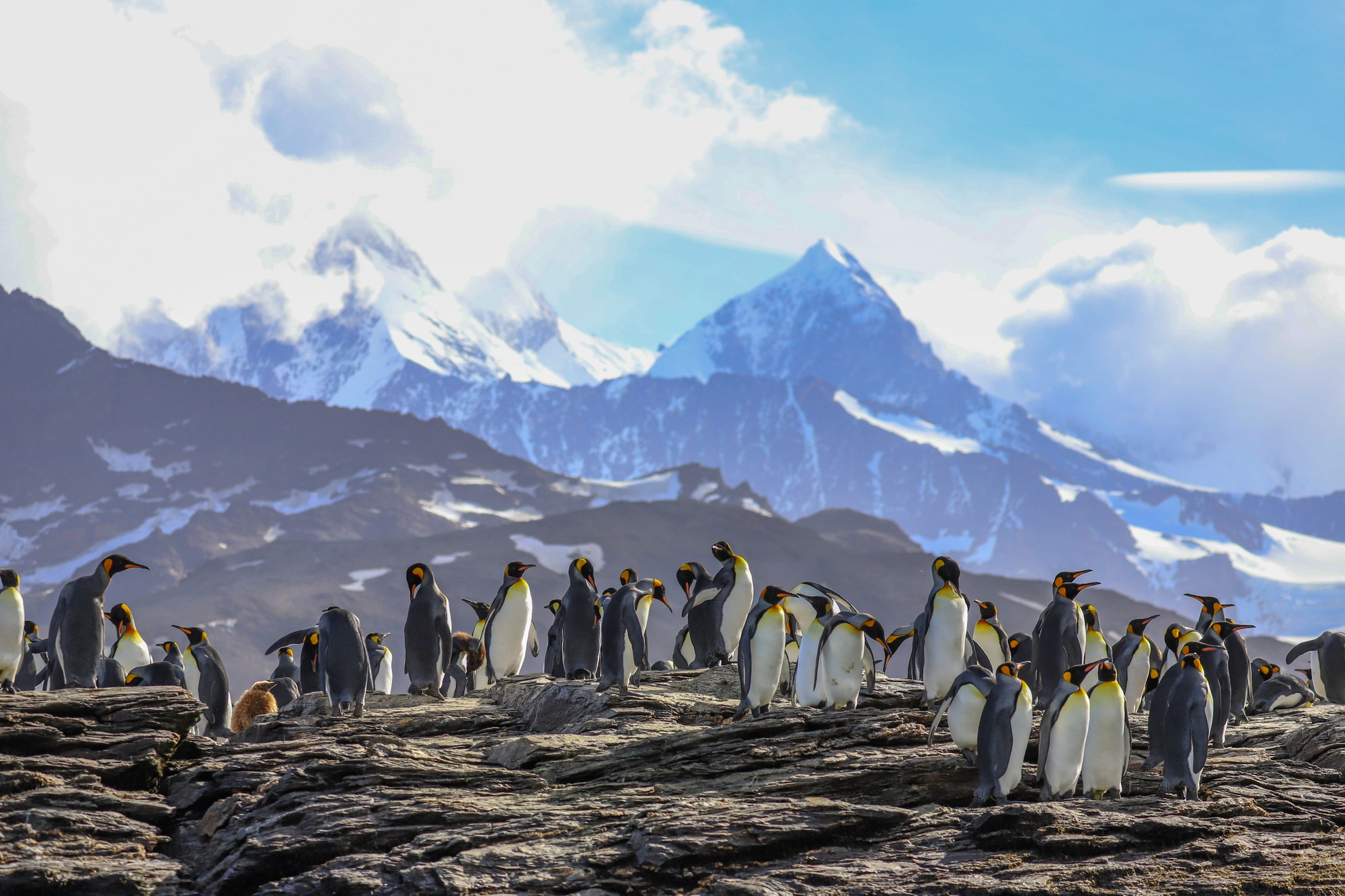
In December–January, chicks of most penguin species begin to hatch. The weather becomes more stable, with more sunshine and calmer seas.
In February–March, the chicks grow up, and more whales can be seen around the ships.
Each period has something special to offer, so it’s worth thinking about what exactly you want to see and when it is best to go for that.
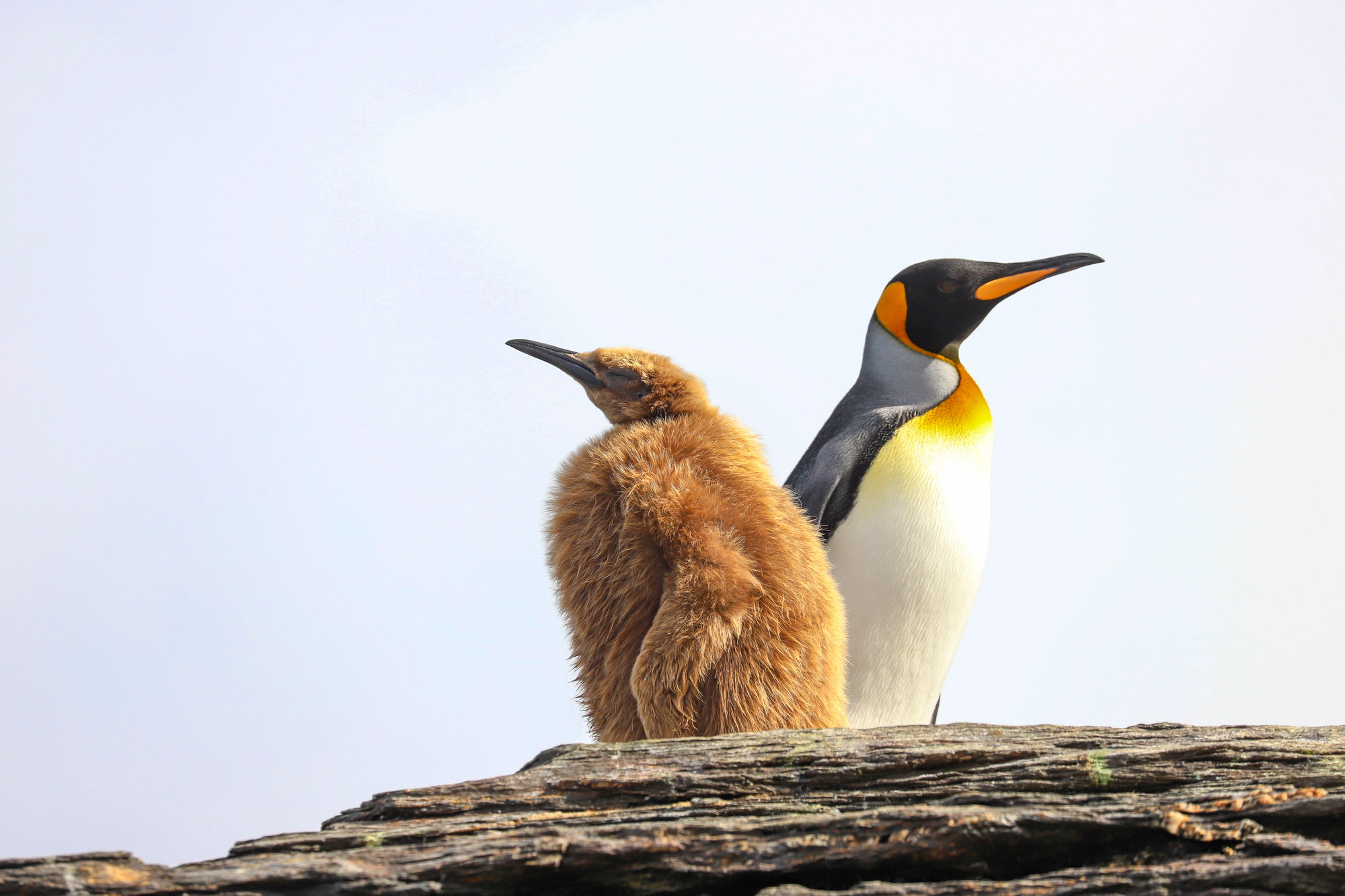
What to Do in Antarctica
So, what can you actually do in Antarctica besides setting foot on the seventh continent?
When people say “Antarctica,” they usually mean the Antarctic Peninsula. It’s home to many research stations, and some operators offer not only landings but also trekking and even camping — spending a night in a tent on the ice.
There are beautiful snowy landscapes and mountains, wildlife watching, kayaking, diving (for experienced divers only), and the famous polar plunge — jumping into freezing ocean water. That’s basically it. Of course, there are also more extreme options — you can take part in the Antarctic Marathon or even climb Mount Vinson, the continent’s highest peak — but a regular cruise will not be enough for that.
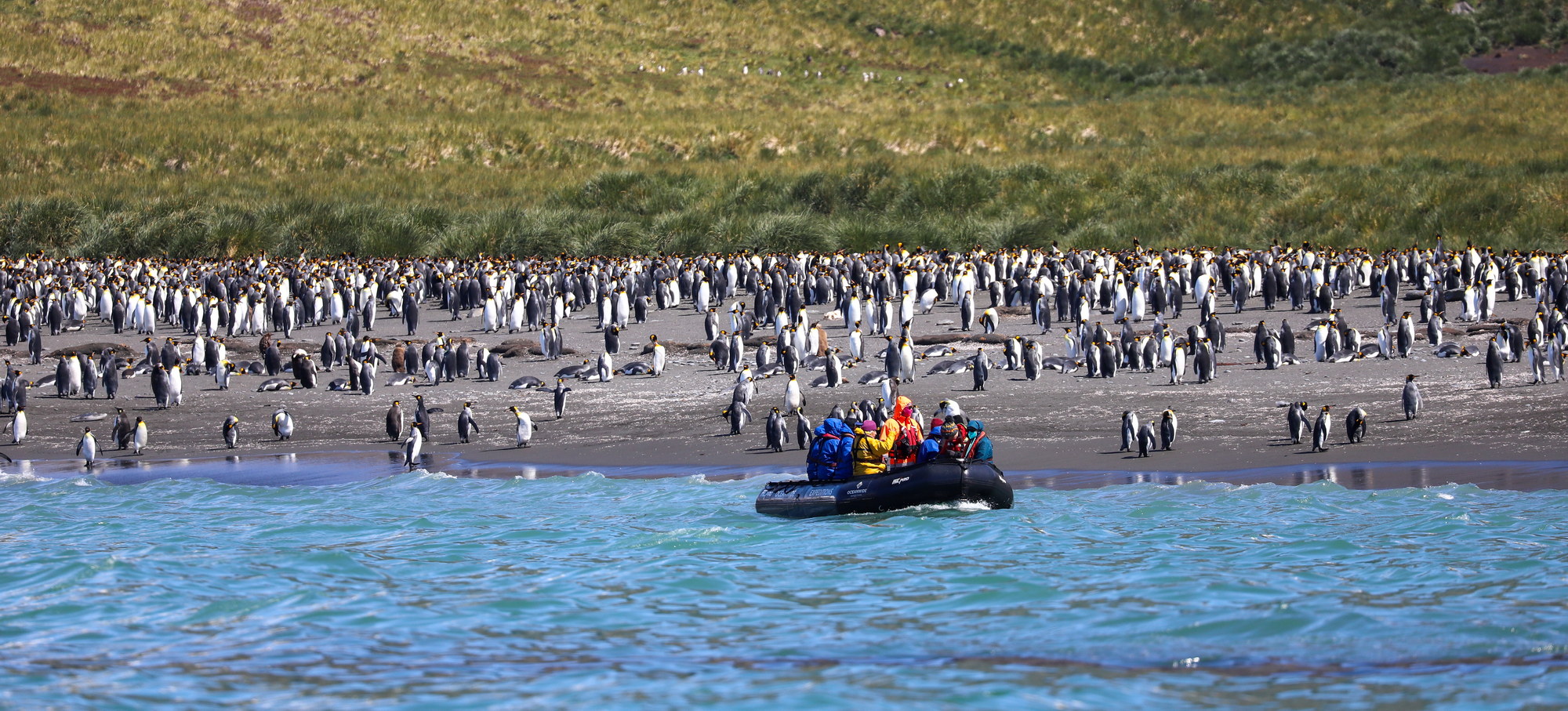
And don’t forget about the subantarctic islands: the South Orkney Islands, South Georgia, South Sandwich Islands, and the Falklands. These places are much more diverse, and if you look at photos, you might not even realize they are so close to Antarctica. Mountains, green meadows, and plenty of seals and penguins — that’s what reminds you that Antarctica is not far away. If you are a wildlife lover, South Georgia is definitely a must-see destination on your route.
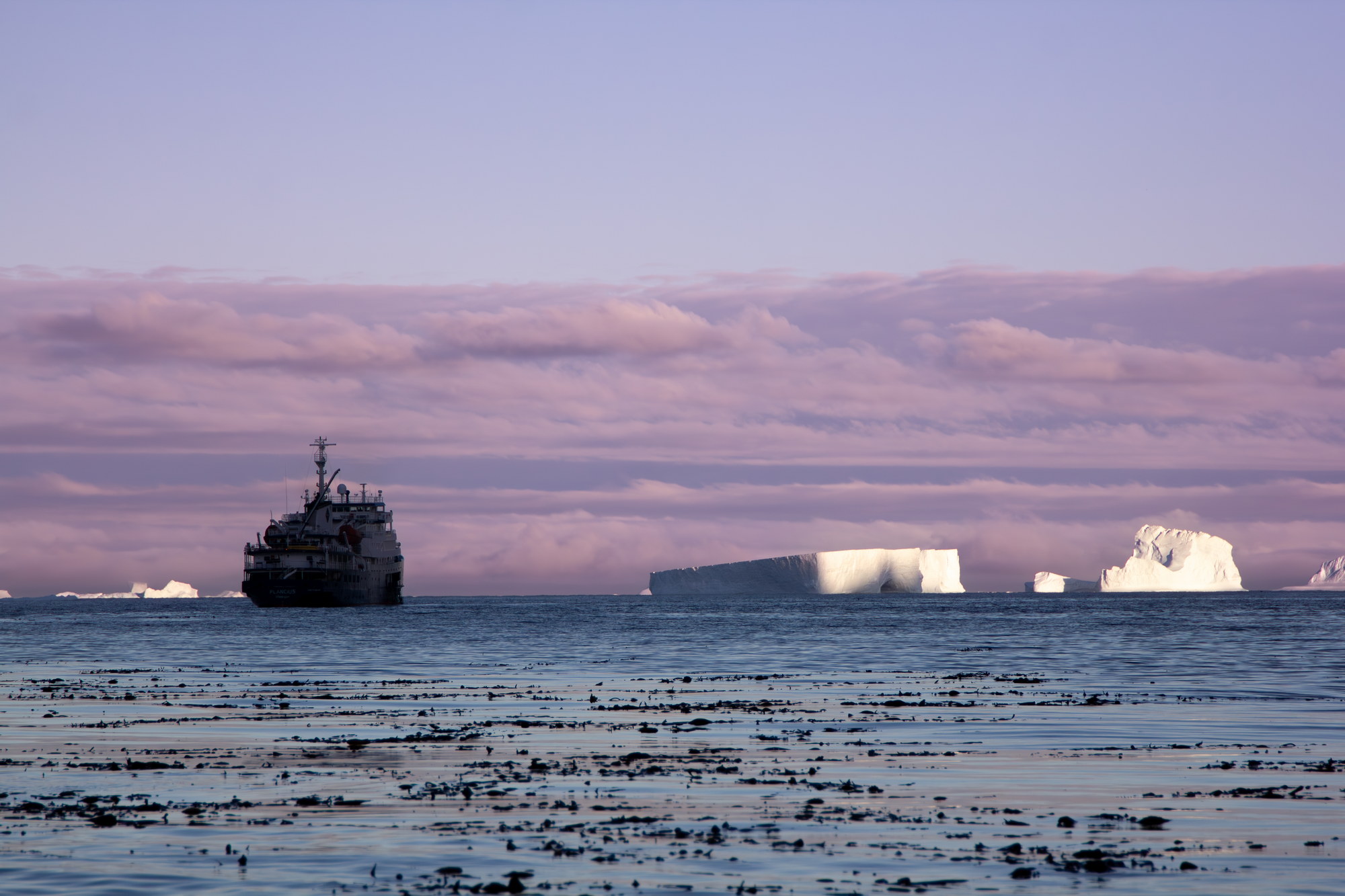
What to Take with You
This is an important and quite tricky question, as everyone will have their own opinion. The tour operator will definitely send you a list of required items. Also, check whether the company provides a waterproof and windproof jacket (parka) or rubber boots — sometimes they rent them out.
With Oceanwide Expeditions, you don’t get a jacket, but they do provide rubber boots and a waterproof bag. So, I had to bring my own waterproof pants and jacket (I used regular hiking ones), as well as warm clothing and underwear. Onboard the ship — in the lobby or restaurant — you can wear whatever you like. The temperature inside is about 18–20°C, warm and comfortable. Still, it’s smart to keep a jacket nearby — what if whales appear, and you’re not ready to rush outside?
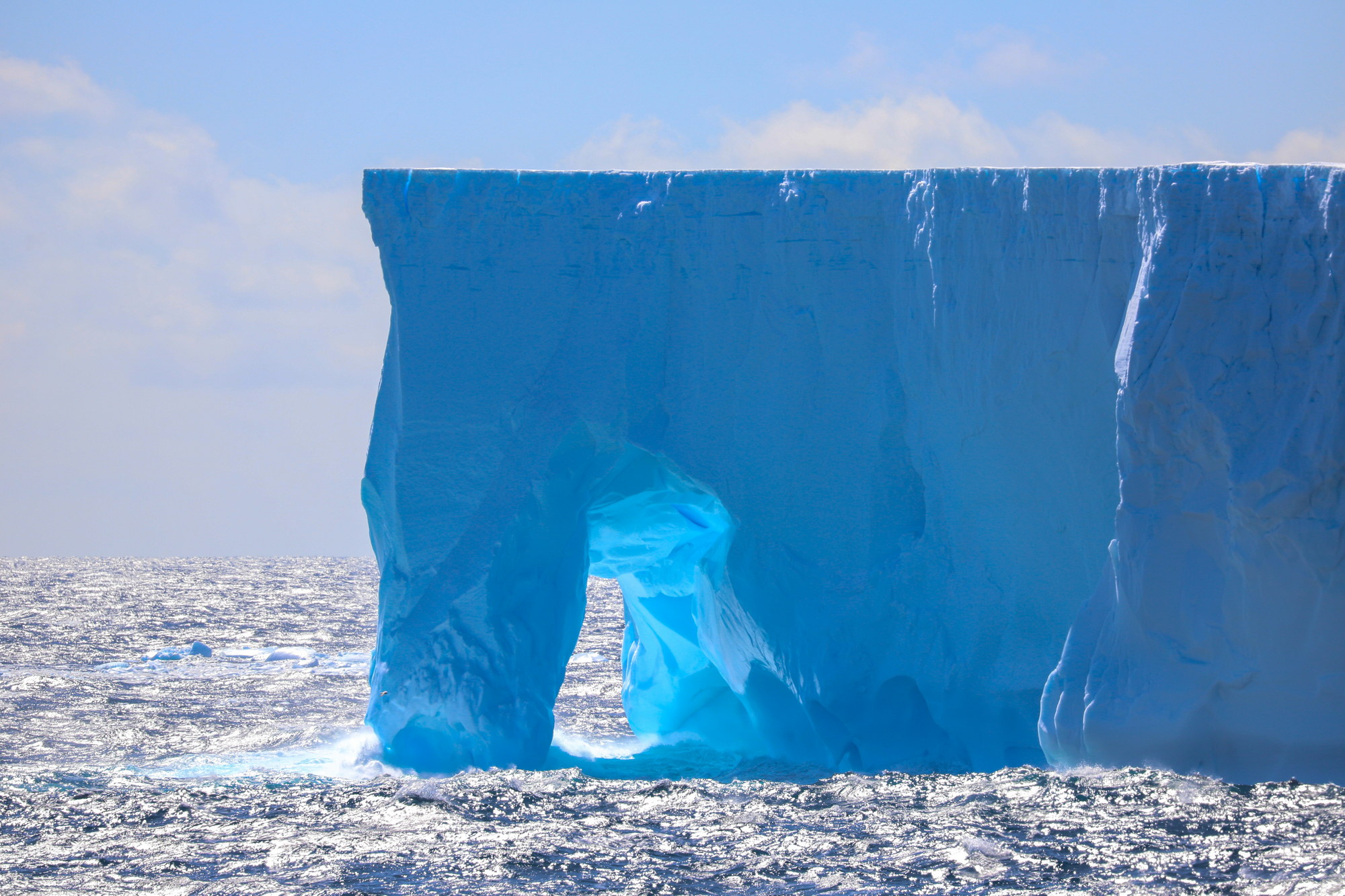
I also spent some time deciding whether to bring a down jacket, and I did — no regrets. In good weather, it was the best outer layer: warm and windproof. If you plan to spend a lot of time on open decks, a down jacket is simply a must.
For photography, a telephoto lens is very useful, but it’s also good to have something like 24–70mm, since sometimes birds or seals are just a few meters away. A tripod is optional — check if your cruise company allows tripods onshore (some don’t). On zodiac boats, a tripod is not very practical, though a monopod might help if you use a heavy lens.
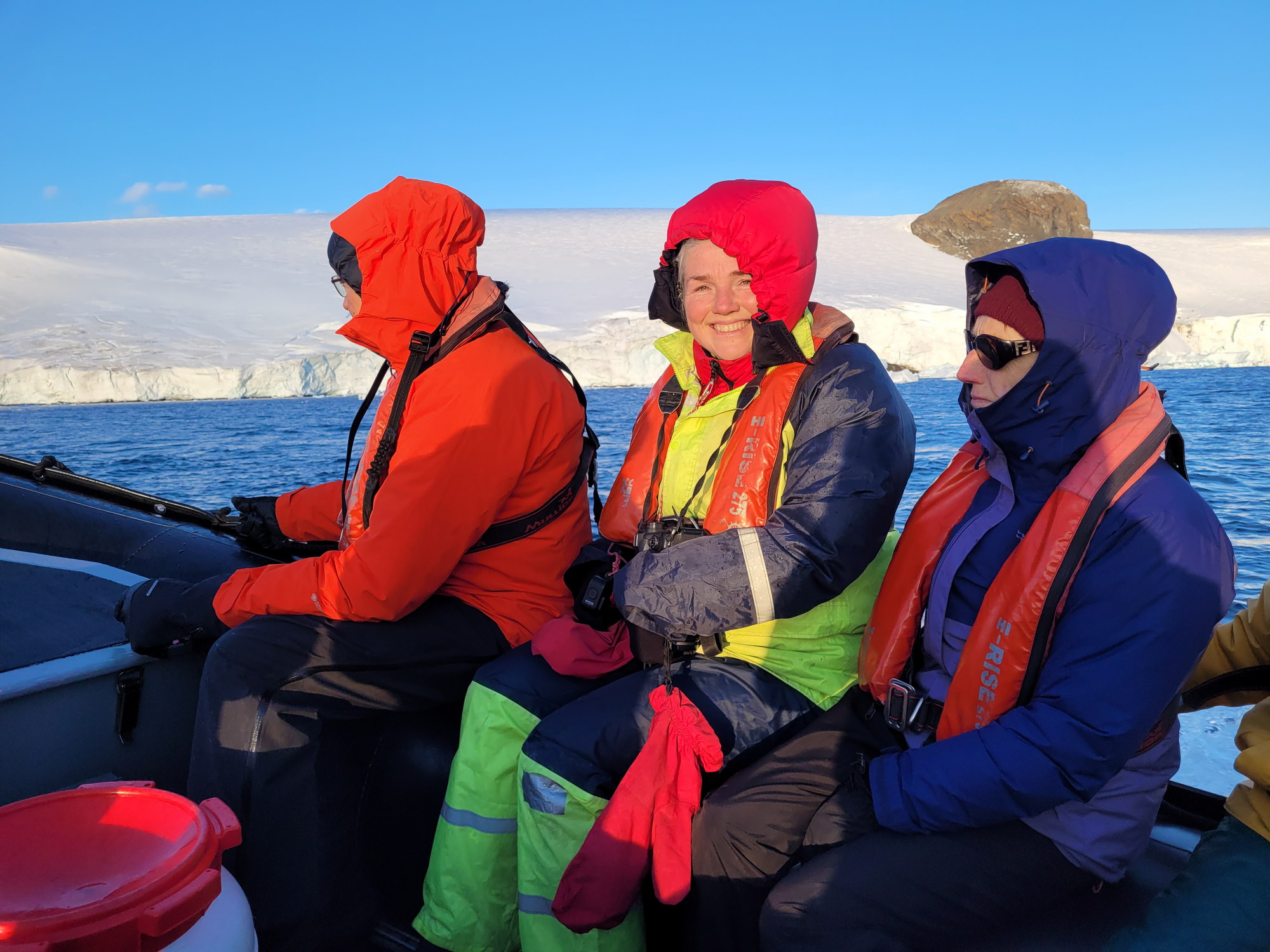
Who You Can See on an Antarctic Cruise
When traveling to Antarctica, people expect to see penguins — and you will, plenty of them! But probably not the species you imagine. Many people think of king and emperor penguins. However, king penguins live only on subantarctic islands (such as South Georgia), while emperor penguins are found only deep in Antarctica — not along the Antarctic Peninsula. There are separate cruises to see emperor penguins.
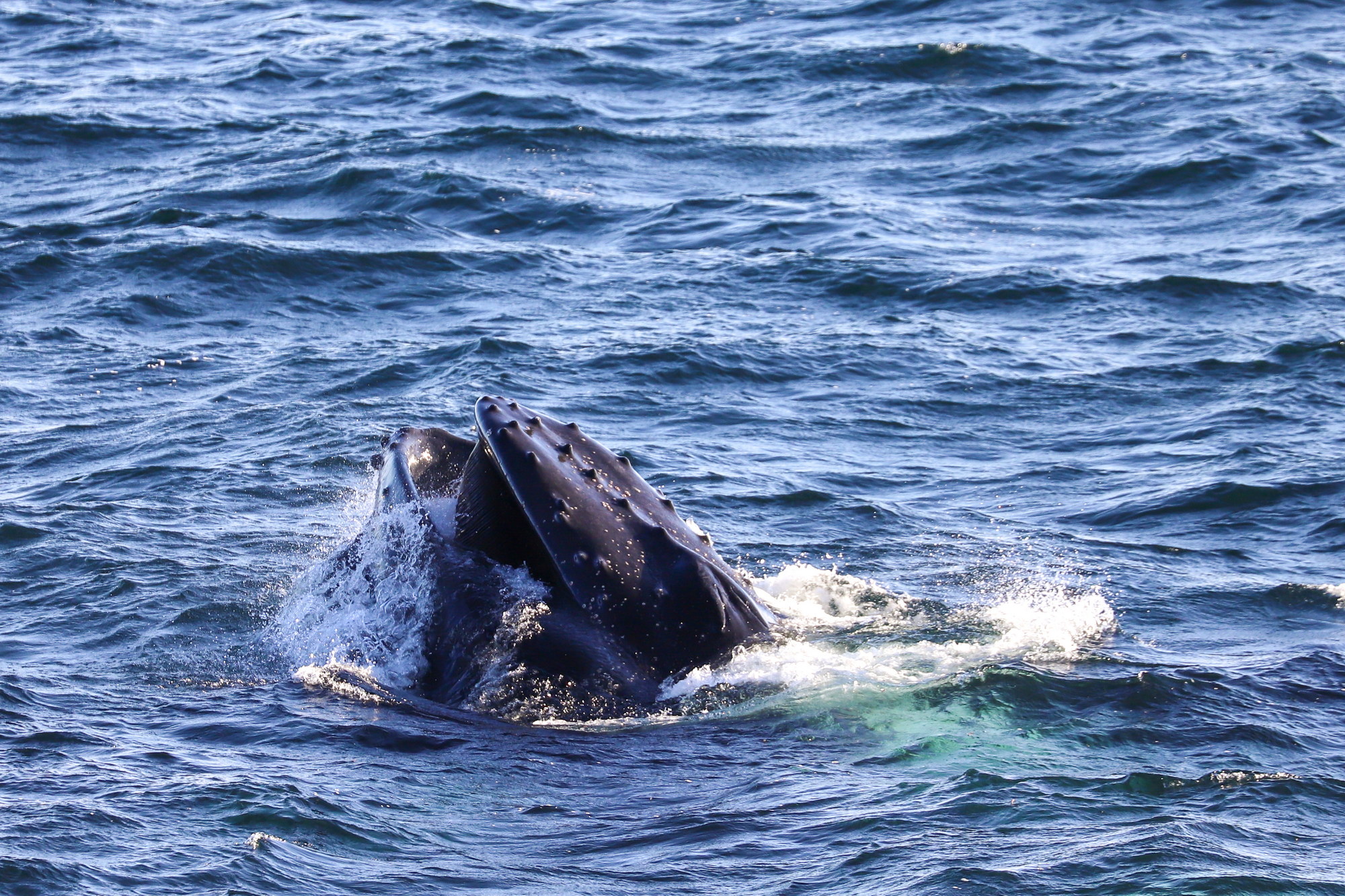
So, who will you actually see? You’ll likely encounter gentoo, Adélie, chinstrap, macaroni, and rockhopper penguins. You may also see various seals and, if you’re lucky, leopard seals. There are many seabirds, dolphins, and whales, so boredom is not an option.
We were lucky enough to see a blue whale — the largest mammal on Earth — a rare sight in those waters.
On the subantarctic islands, you won’t miss the king penguins, and you might also spot Magellanic penguins, which nest in burrows. Of course, there are also gentoo, chinstrap, rockhopper, and macaroni penguins, as well as many fur seals.
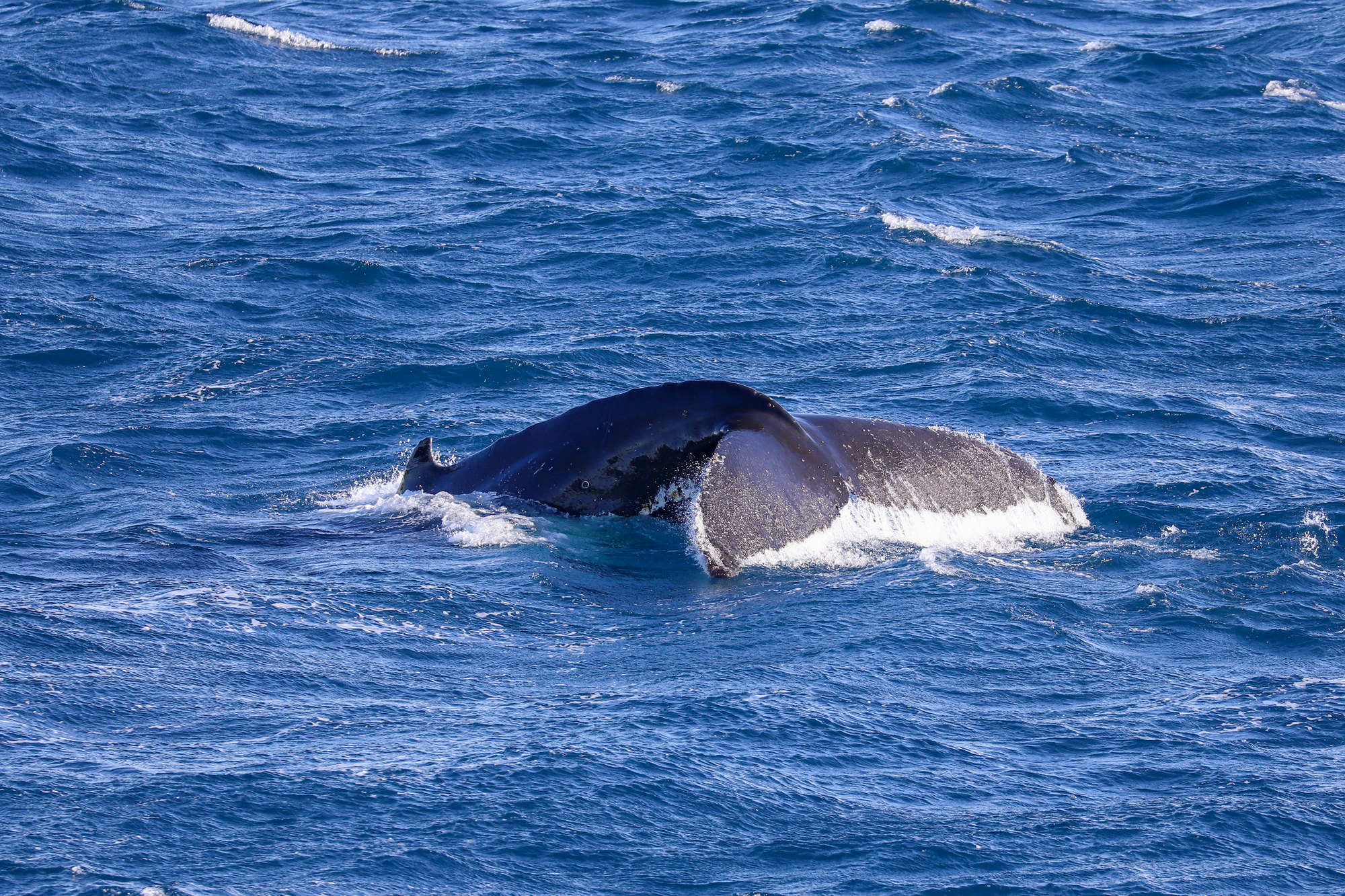 My Experience: 18-Day Cruise — Antarctica, South Georgia, and the Falkland Islands
My Experience: 18-Day Cruise — Antarctica, South Georgia, and the Falkland Islands
Europe – Buenos Aires
The first stage of my journey was a transatlantic flight. I flew from Poland to Buenos Aires via Frankfurt. I decided not to rush and planned to stay two nights in Buenos Aires — to recover after the long flight, adapt to the new time zone, and have some extra time in case of delays.
And that decision turned out to be very wise. Right after landing, when I turned on my phone, I received two messages: one welcoming me to Argentina, and the second saying that my flight to Ushuaia had been canceled. Trying to find airline representatives at the airport brought no result. The next available flight on that route for that company was only a month later...
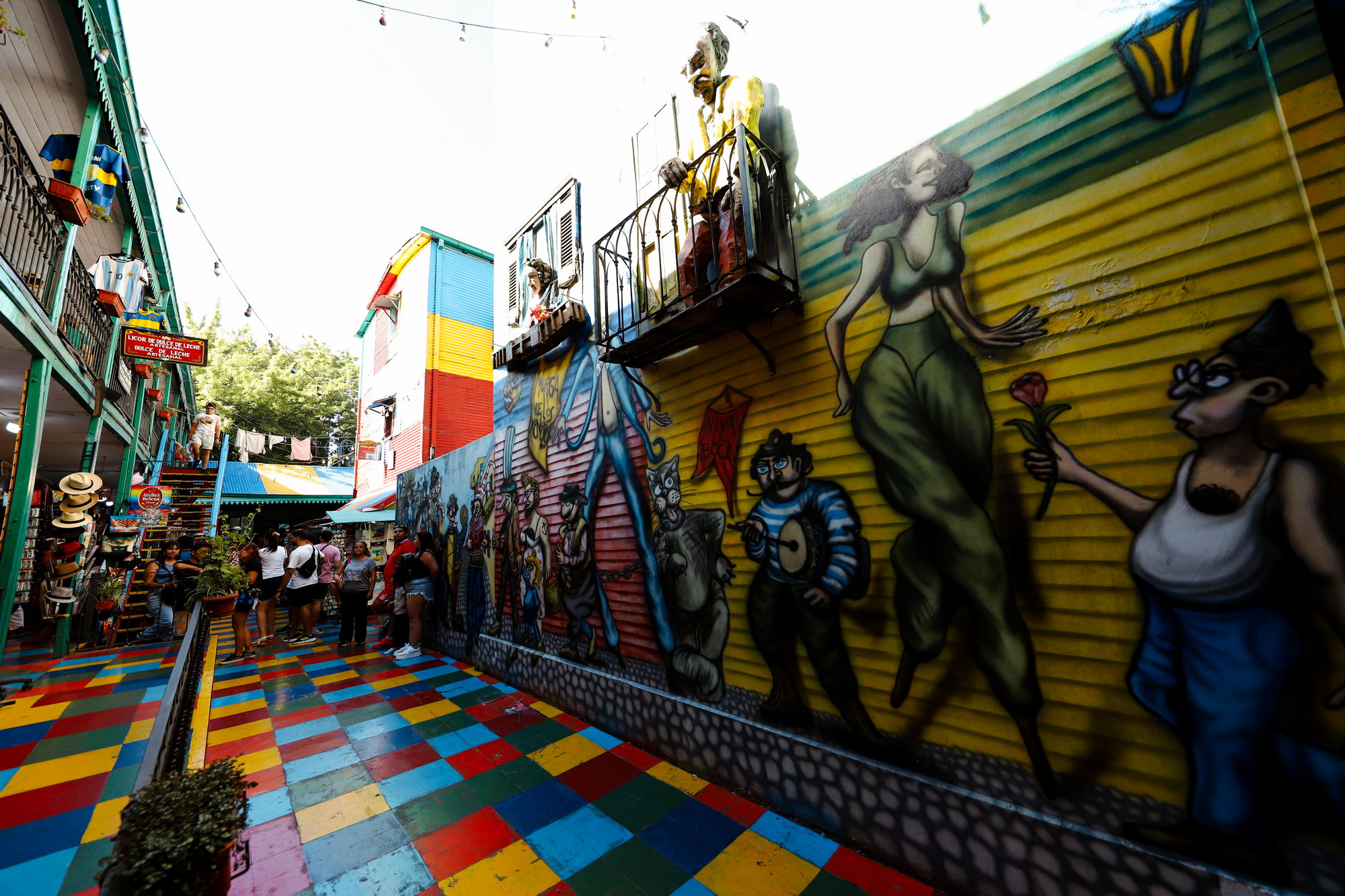 My original ticket from Buenos Aires to Ushuaia cost $72, and I got a refund about a week later (though, because the Argentine peso had fallen sharply, I received about half the amount in USD). I had to buy a new ticket, which cost $200. Such surprises are never pleasant, but luckily, I had planned that extra day.
My original ticket from Buenos Aires to Ushuaia cost $72, and I got a refund about a week later (though, because the Argentine peso had fallen sharply, I received about half the amount in USD). I had to buy a new ticket, which cost $200. Such surprises are never pleasant, but luckily, I had planned that extra day.
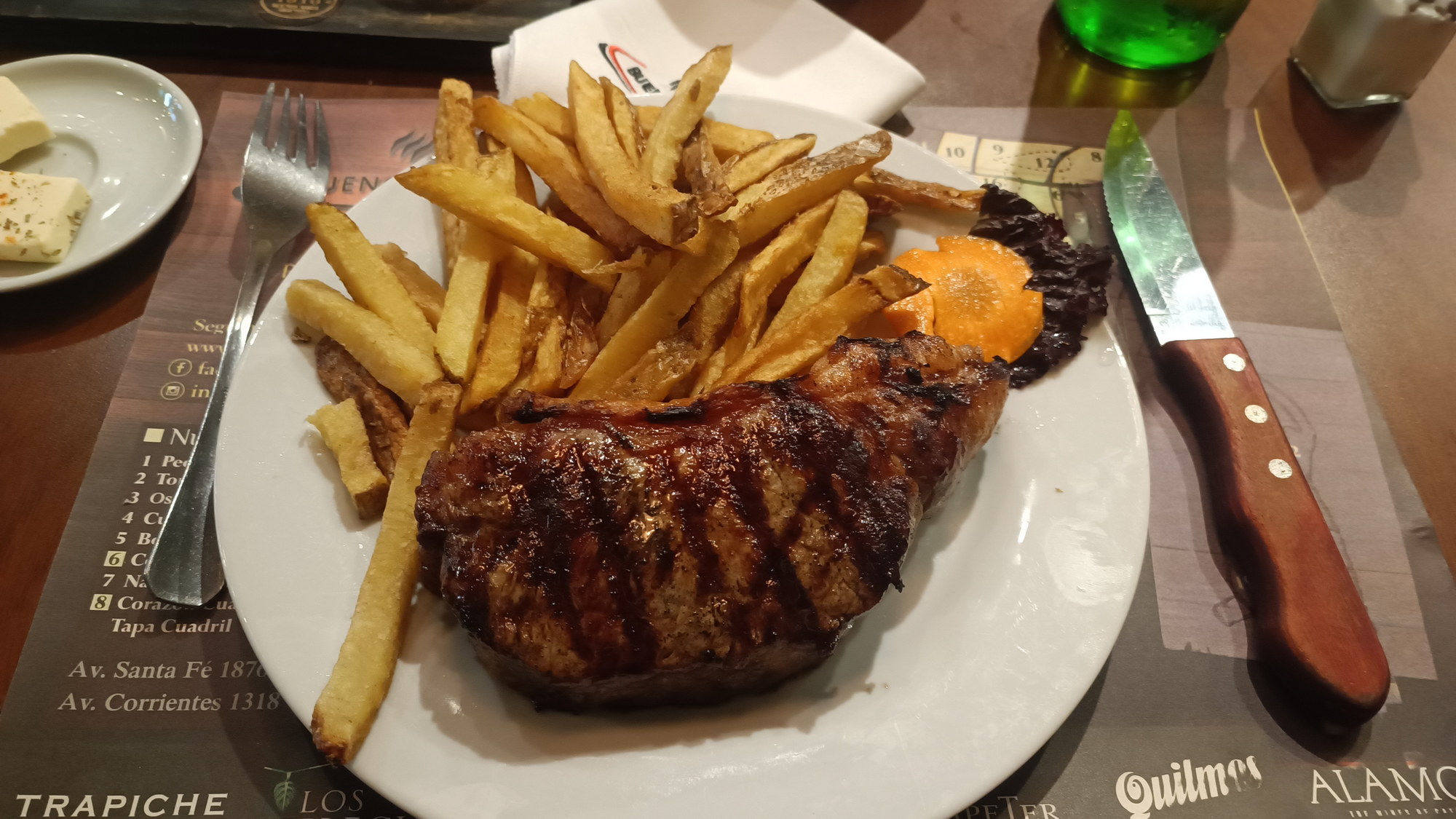
I spent a day and a half in Buenos Aires, walking around the most interesting spots and exchanging dollars on the black market at a much better rate.
Buenos Aires – Tierra del Fuego
Then came my flight to Ushuaia! Argentina is a huge country, so the flight takes about 3.5–4 hours. It’s a good idea to be patient — and to have some warm clothes in your hand luggage, just in case your checked baggage gets lost. The weather difference is dramatic: from hot Buenos Aires to cool, early-spring Ushuaia.
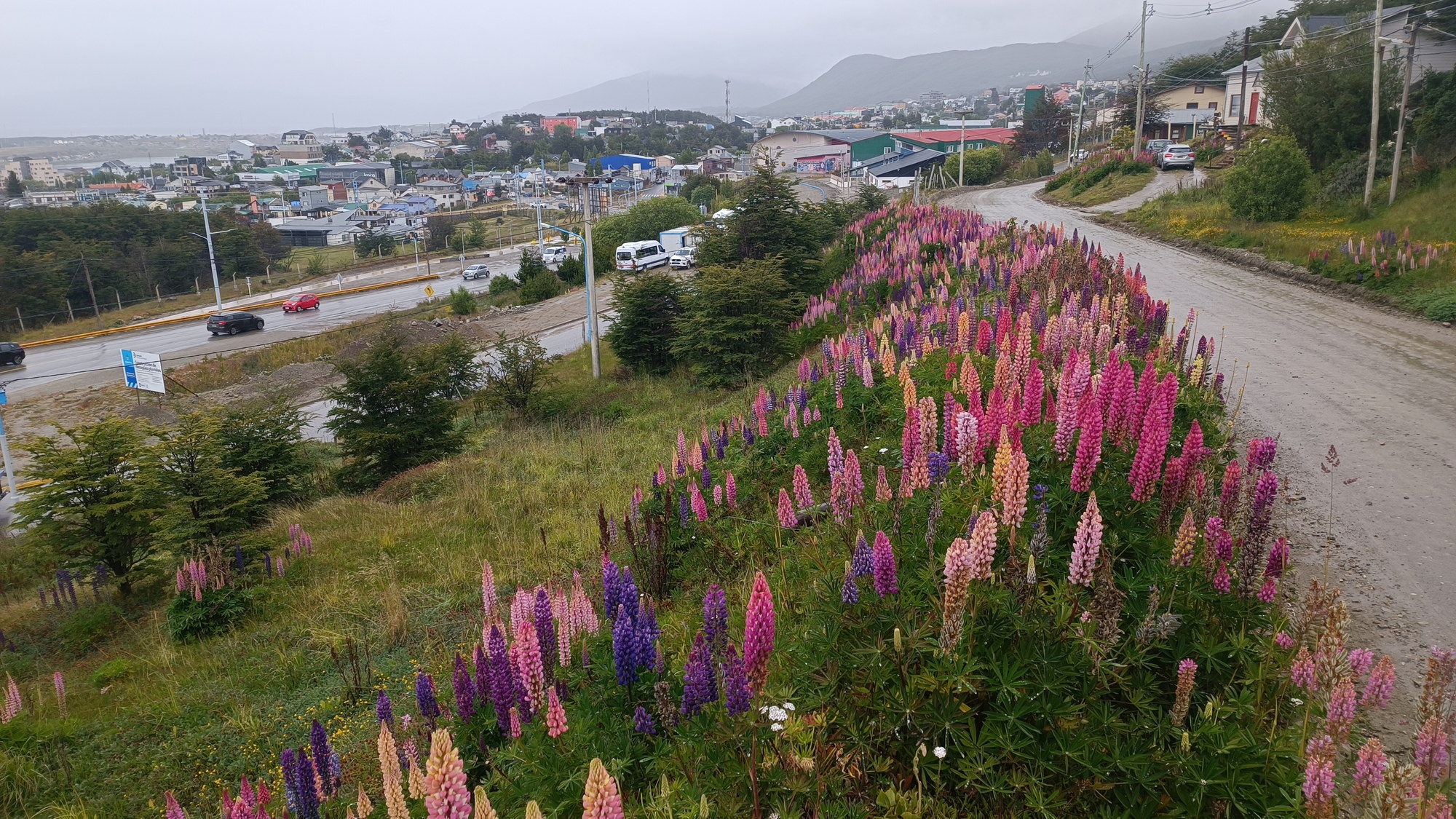
I spent one more night in Ushuaia — mainly because if my flight were delayed or my luggage lost, I’d still have time before the cruise. There are several flights per day, so the chances of getting your luggage later are quite high.
Ushuaia is a lovely place to explore — you can hike in the nearby mountains, take a ride on the “End of the World” train, or simply walk along the waterfront and take a photo by the famous Ushuaia sign that reads “Fin del Mundo” — The End of the World. I had already been there before and even camped in several places across Tierra del Fuego, so this time I just enjoyed a few calm walks around the city.
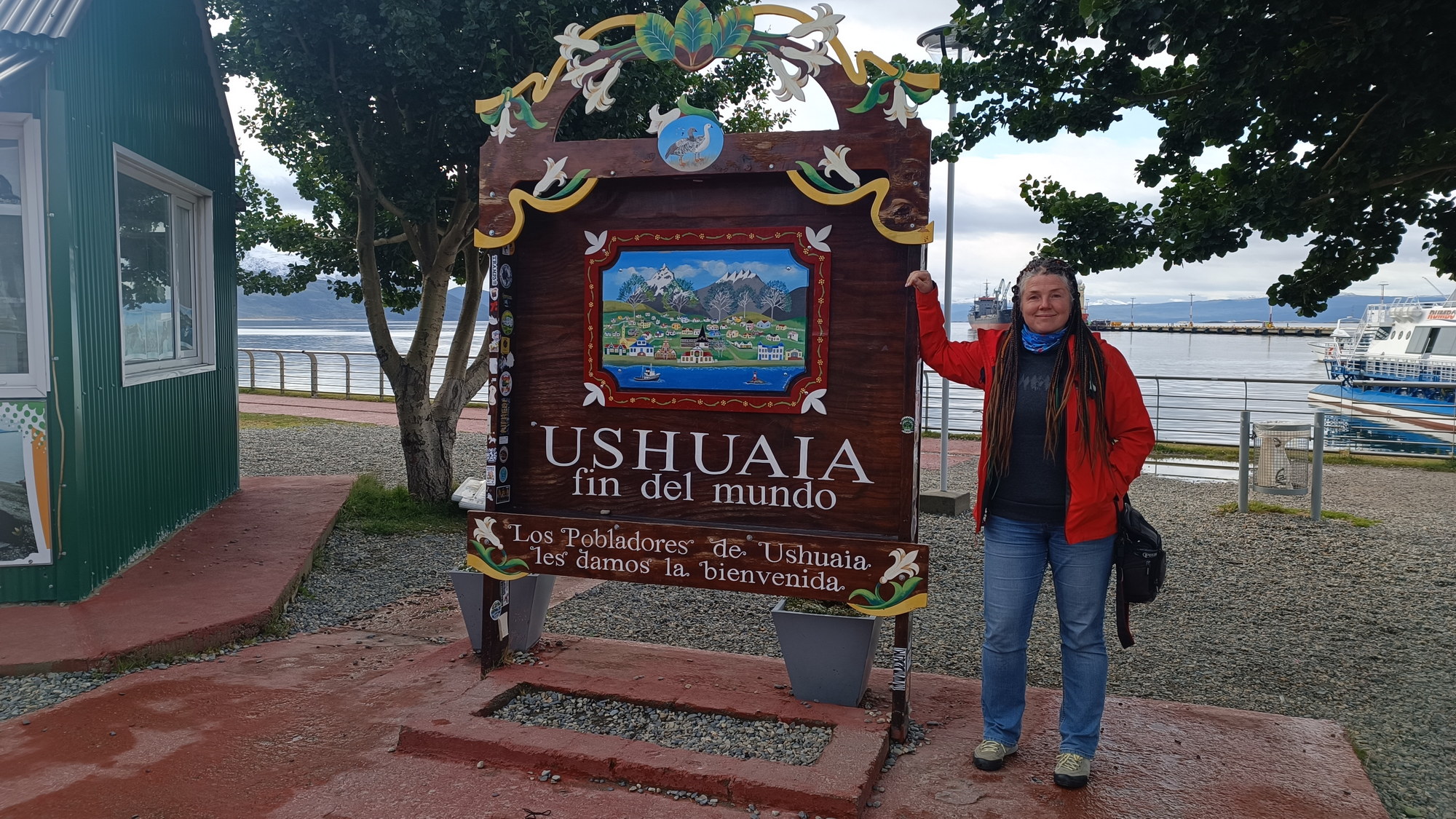
Boarding and What It Looks Like
And then — the day of departure! Cruises usually leave around 4–5 p.m., but in the morning, there’s already a place in town where you can drop off your luggage. The staff will transport it to the ship and deliver it to your cabin, which makes it easier for you to enjoy your last walk around Ushuaia. At that time, you’ll also be told your cabin number.
Boarding the ship takes about one to two hours, depending on its size. People arrive gradually, settle into their cabins, and gather in the lobby to chat and meet each other.
Even on expedition cruises, there are organized groups — usually brought together by travel agents. Sometimes they have their own guide who gives additional presentations in another language or simply helps with logistics. On our cruise, there were such groups from Germany and California, USA.
When I arrived, I was greeted at the entrance, given my cabin key card, and shown the way. My cabin was listed on the third deck, which was strange — all four-person cabins were supposed to be on the second. I opened the door and saw... no luggage, and the cabin had only two beds. Something didn’t add up. I went back to ask, and they told me: “You got an upgrade from a four-person to a two-person cabin! Your bag was delivered to the wrong room by mistake — we’ll fix it right away.”
And just like that, I found myself in a double cabin for the price of a quadruple.
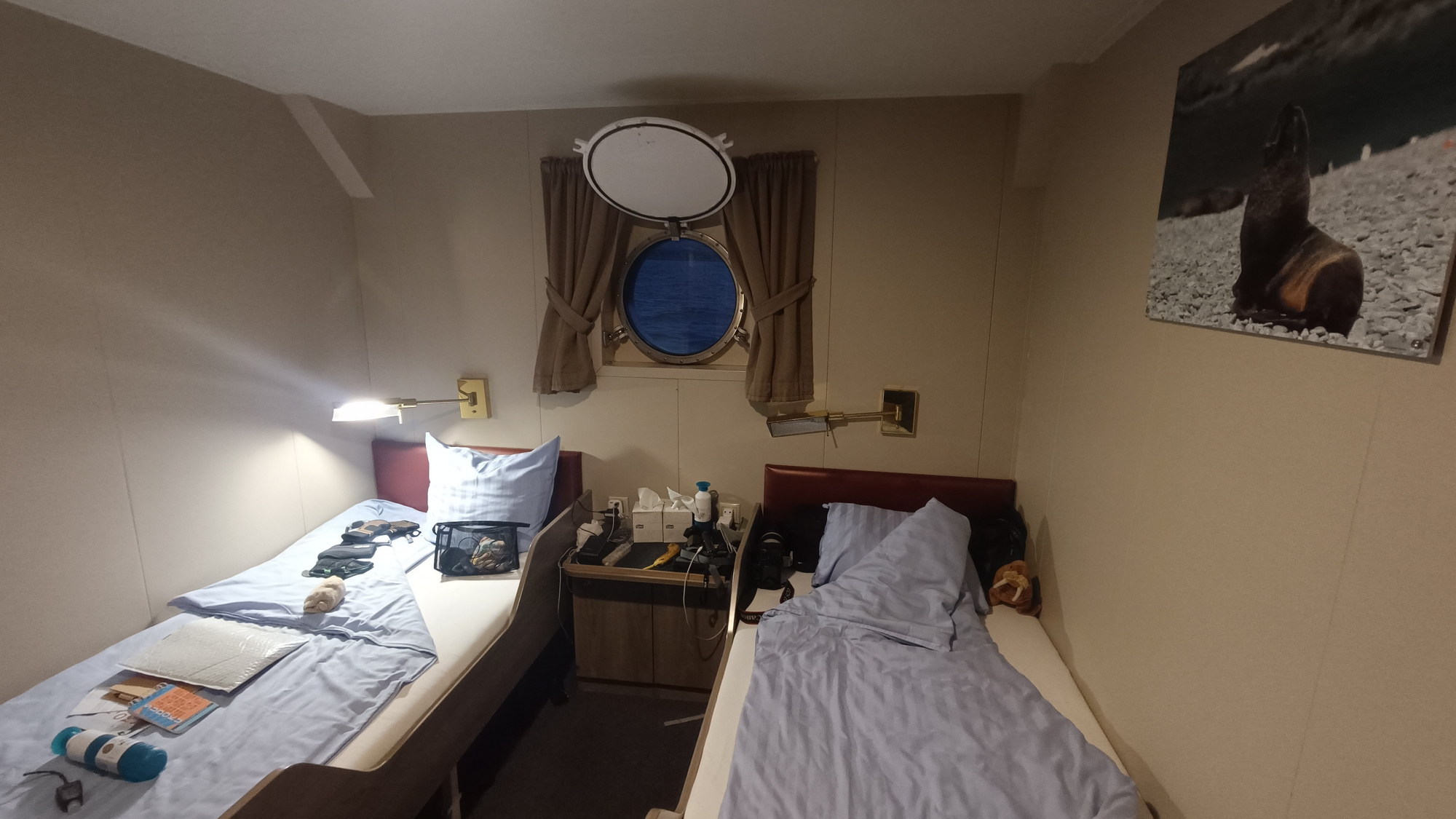
If you book a shared cabin and don’t buy all the beds, note that cabins are single-gender only. So, if you’re a couple wanting to book two spots in a four-person cabin, you’ll be placed in separate male and female cabins.
My cabinmate was a woman from the U.S. with Taiwanese roots. We got along very well — and, thankfully, neither of us snored! :)
And so, our journey began. We left the port, and the first few hours took us through the Beagle Channel. Shortly after departure, everyone was invited to the lobby — glasses of champagne, a welcome speech from the captain, and… an announcement: plans had changed.
Usually, this time of year, ships first visit the Falkland Islands, then South Georgia, and finally Antarctica, crossing the Drake Passage on the way back. But the weather forecast showed storms near the Falklands in the coming days — meaning we wouldn’t be able to land or see much there.
After discussing the situation with the expedition team, the captain decided to reverse the route: we would go to Antarctica first, then South Georgia, and only at the end to the Falklands. And so, on our very first night, we began our crossing through the Drake Passage.
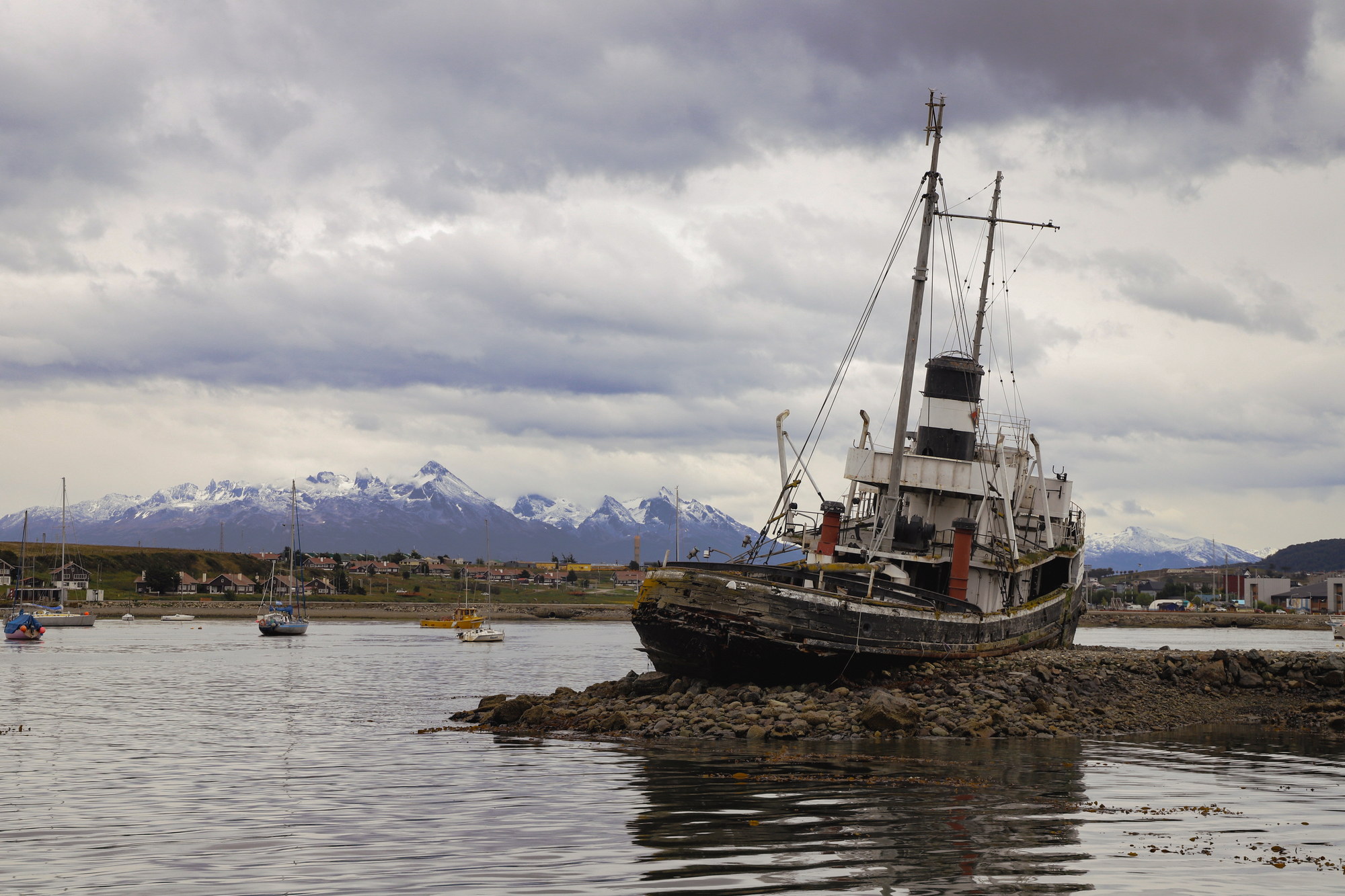
The Drake Passage
Many travelers fear the Drake Passage — some companies even offer to fly over it instead of sailing through. For us, it came right at the beginning of the trip. It wasn’t a full storm, but the sea was rough, and waves were strong enough to wash over the bow. The lower decks were closed, and passengers weren’t allowed outside.
I brought seasickness pills with me, while many others used motion-sickness patches. The problem with patches is that they make you very sleepy and have several side effects. Pills do too, but a bit less. If possible, it’s best to manage without them. The body does adapt — though not immediately, and not for everyone.
I took one pill before the first night, mostly because I really wanted to sleep. After that, I just tried to stay outside as much as possible — the cold sea wind helps a lot, and so does looking at the horizon.
It takes two days to reach the Antarctic Peninsula, meaning two days of open ocean. The only entertainment is watching the waves — maybe a whale will appear, or an albatross will glide past. But the expedition guides kept us busy: twice a day, before lunch and dinner, they gave presentations on different topics — Antarctic research, wildlife, geology, and more. So, there was no chance to get bored.
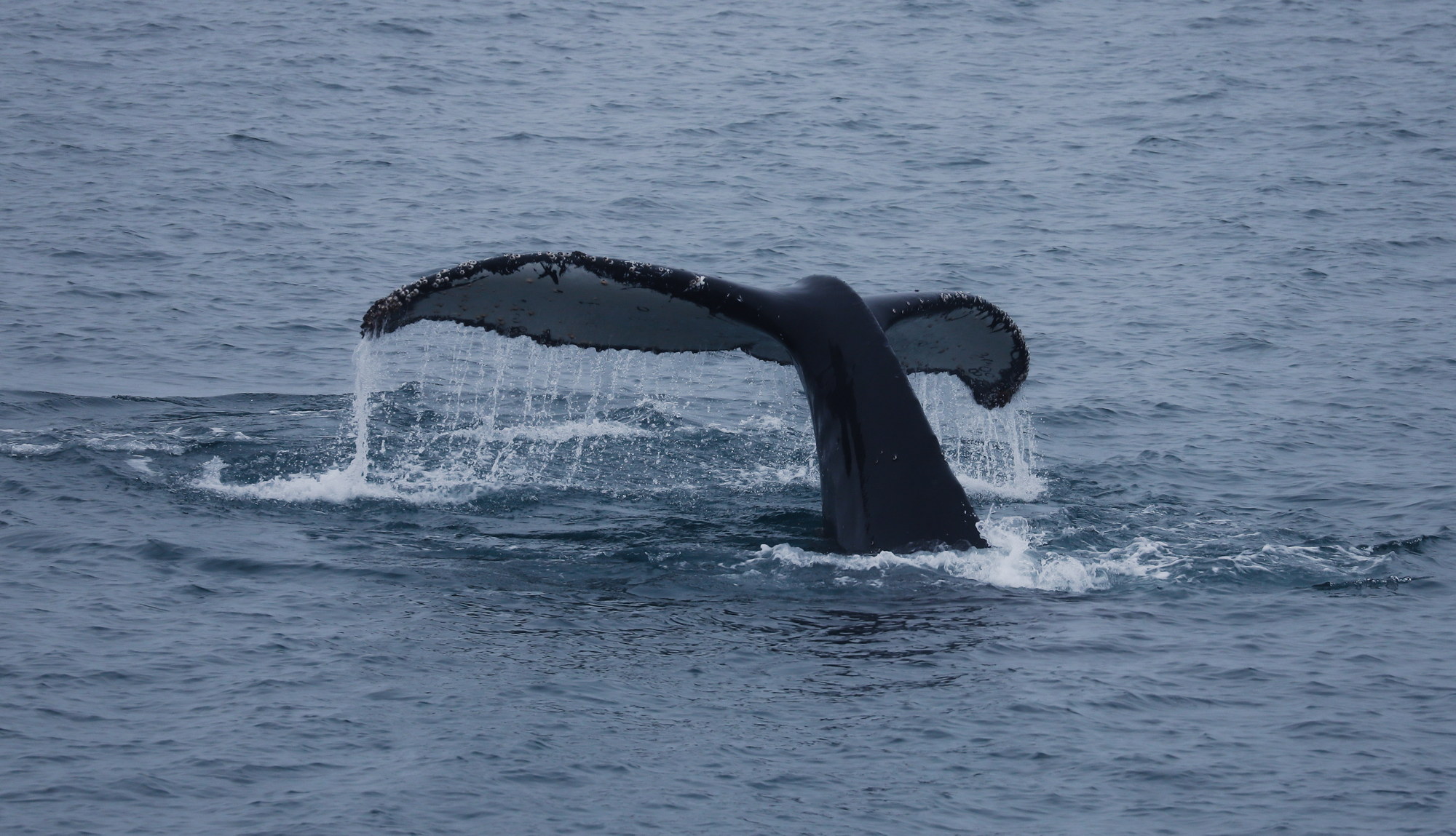
By the end of the second day, more people started showing up in the lounge — only then did I realize how many had been fighting seasickness, staying quietly in their cabins.
And then, in the evening of the second day, we finally saw land — the South Shetland Islands appeared on the horizon. After dinner, we even managed a short zodiac ride.
We saw our first penguins, though the weather was far from pleasant — rain mixed with snow, waves crashing into the boats. But it was the perfect test of our gear and waterproof clothing. Honestly, I thought the whole trip would be like that and started preparing myself for tough weather — but it turned out that this was our worst day, and from then on, everything only got better!
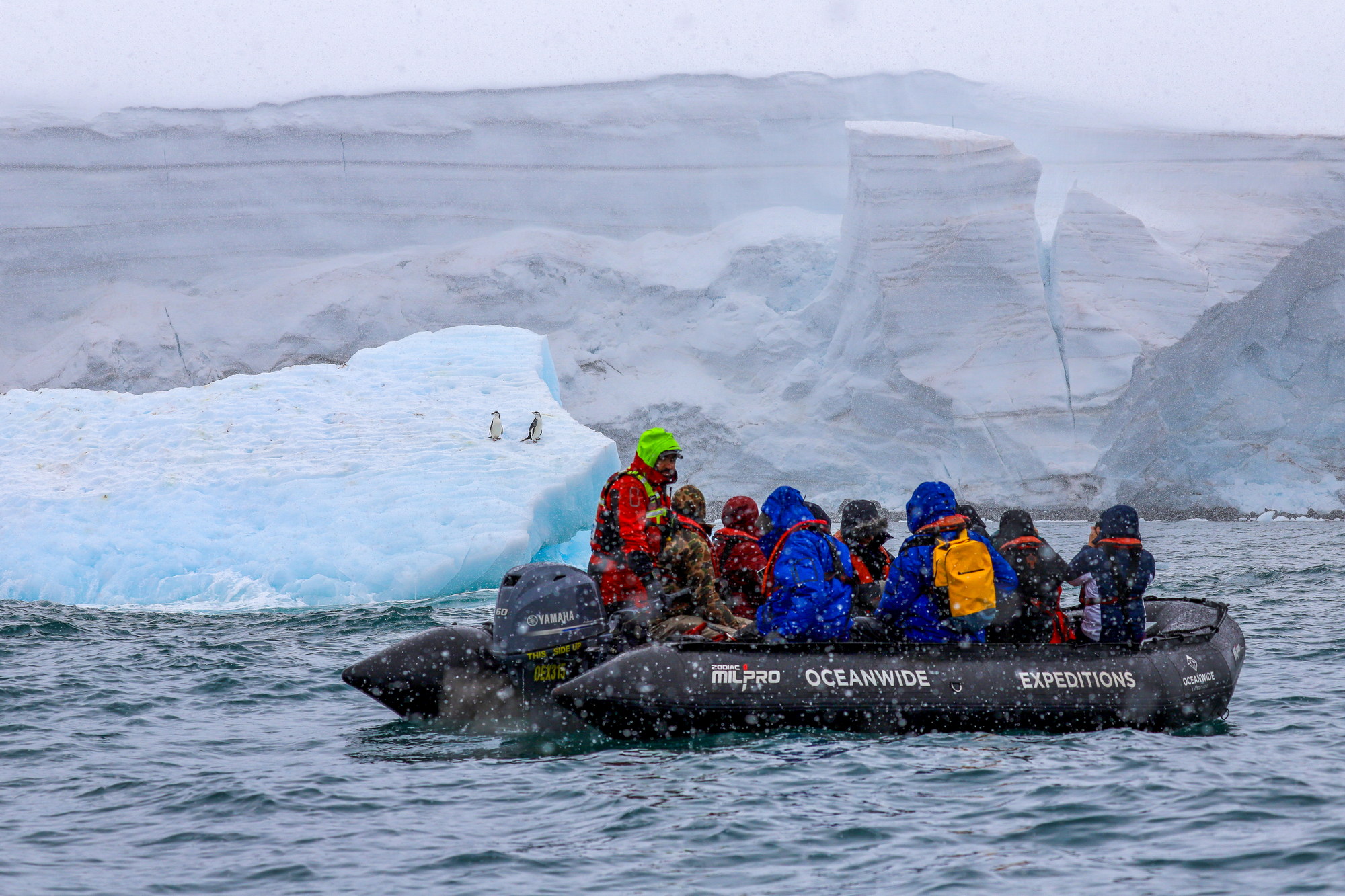 Antarctica
Antarctica
In the morning, we were still around the South Shetland Islands, making several walks and landings. We visited colonies of chinstrap and gentoo penguins, spotted some seals, and in the distance, saw the Chilean Antarctic station. The weather was fantastic — sunny with a bright blue sky. The bad weather from the previous day had completely disappeared.
Next came a short passage to the Antarctic Peninsula. We had limited time here, since we still needed to sail to South Georgia, which is three days at sea. It’s worth noting that if you want to spend more time on the Antarctic Peninsula, combining it with South Georgia can be difficult.
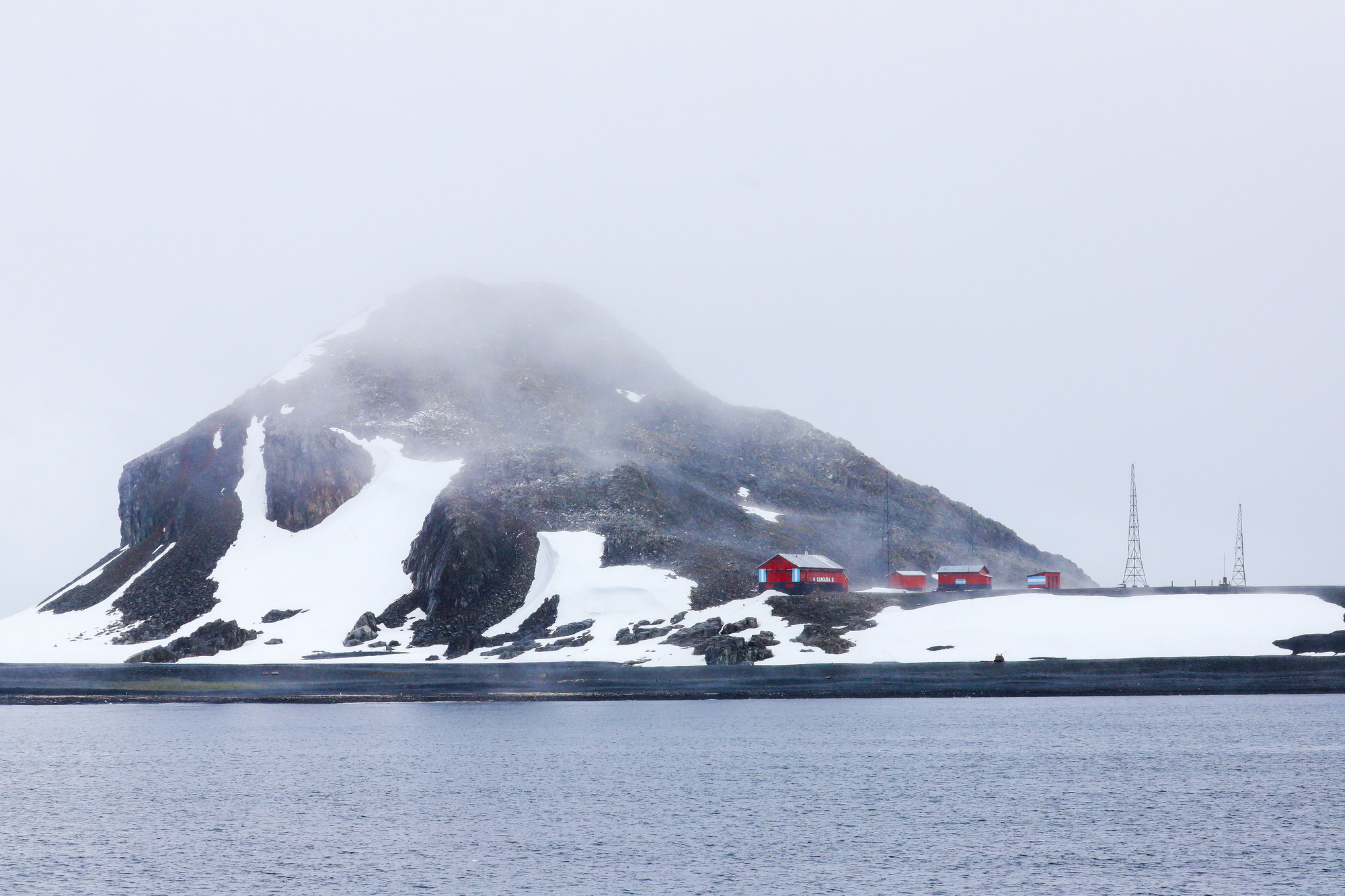
As we sailed along the Antarctic coast, the harsh snowy landscapes unfolded before us, and whales appeared here and there. According to the plan, we were heading to a geologically interesting site with seal colonies, but the wind was getting stronger, making landings by zodiac impossible. What looked like small waves from the upper decks were actually 2–3 meters high when you tried to descend to the lower decks — so there was no question about landing.
The captain decided we could try entering the Weddell Sea and look for a calmer spot “around the corner.” After all, for many passengers, this was their last continent to visit — they wanted to set foot on Antarctica itself, not just the surrounding islands.
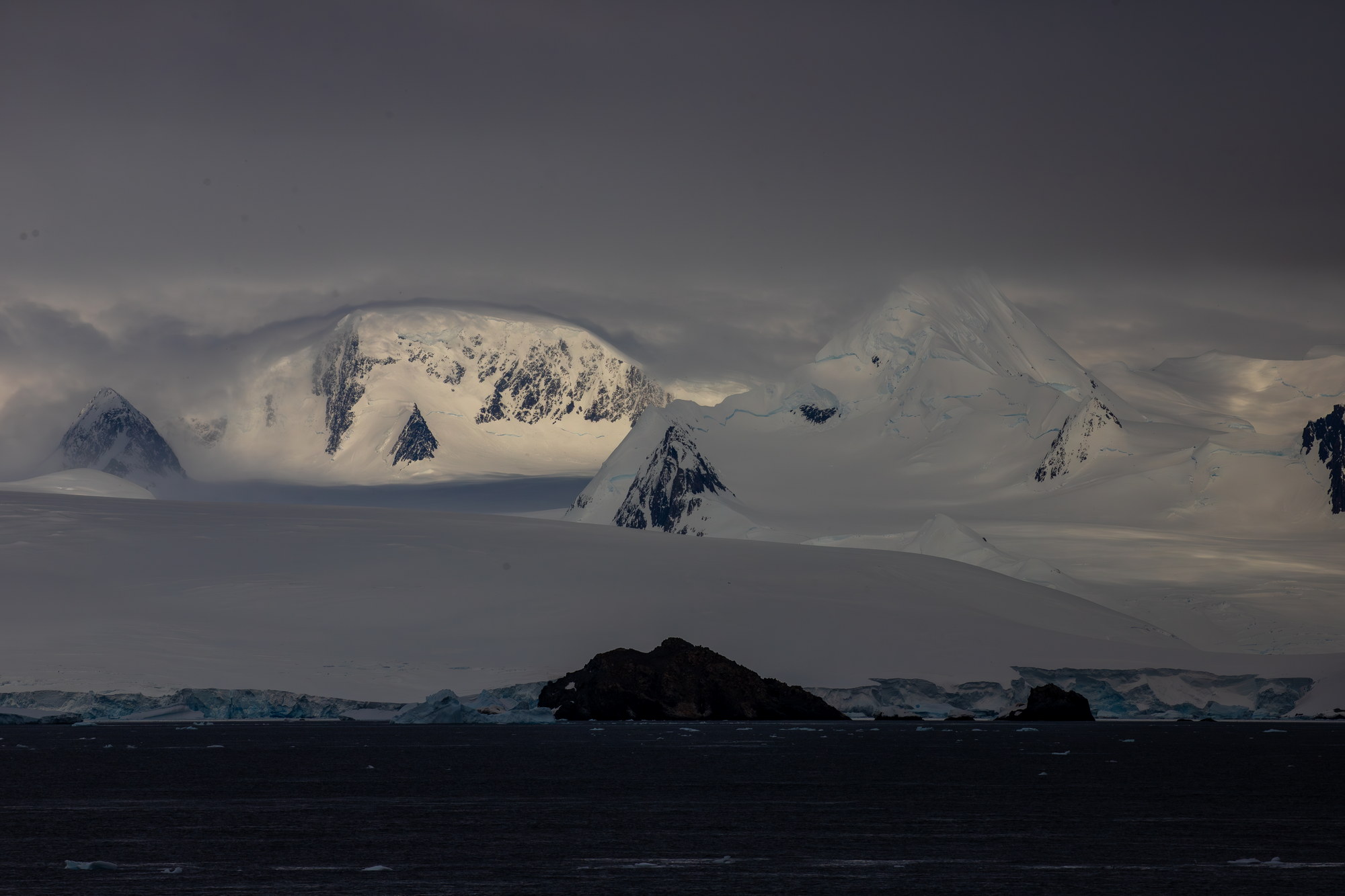
We were lucky: the wind behind the cape was not too strong. However, near the shore, there was a glacier face several meters high, so finding a safe landing spot was necessary. Not every place is suitable, safe, or allowed.
Eventually, a landing spot was found. After dinner at sunset, we went out in zodiacs. Landings were done in small groups because there were simply not enough places for more zodiacs, and this was unexplored territory — so moving far from the shore was not safe.
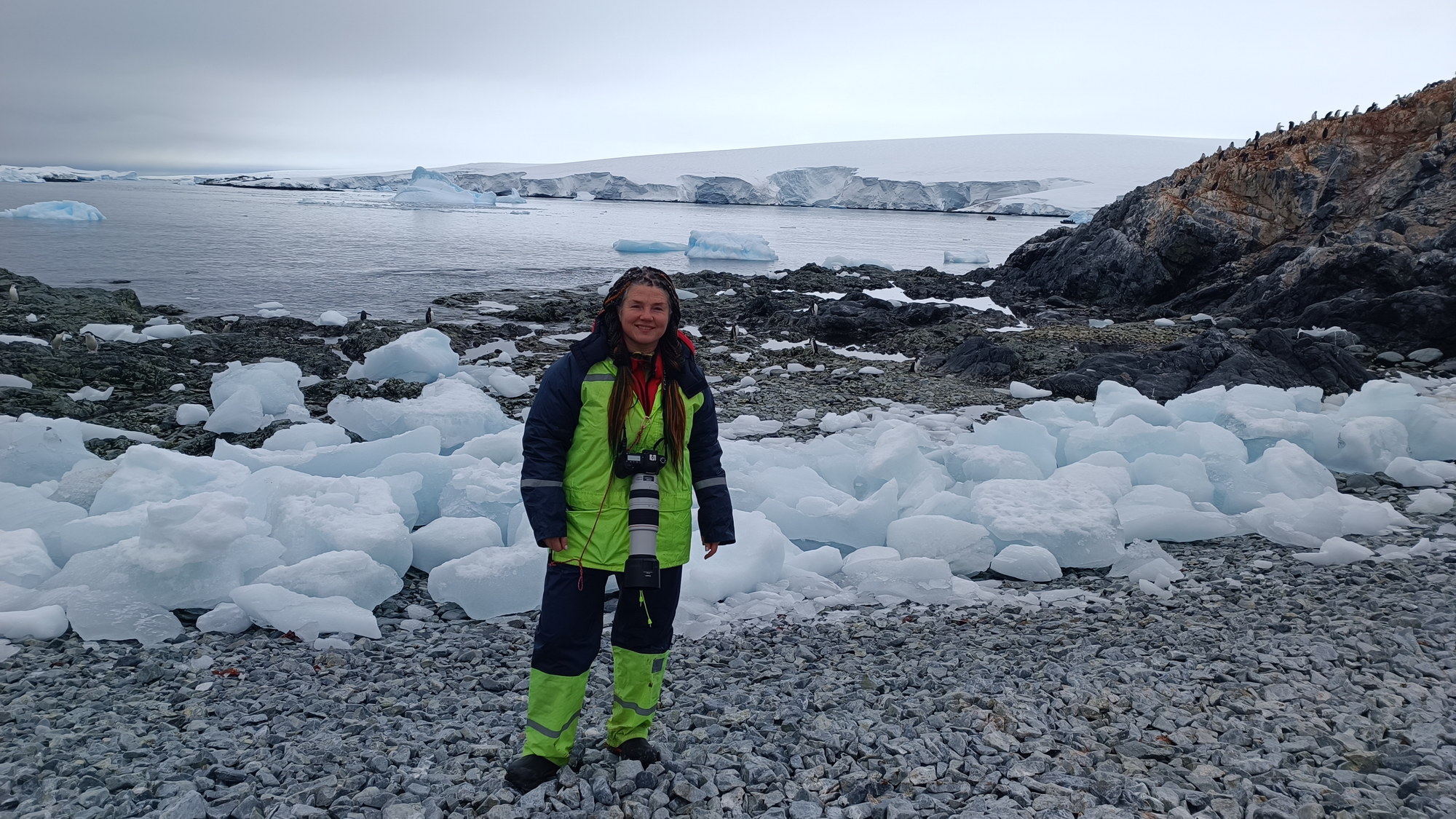
That evening, there was a small celebration — we had finally landed on the Antarctic continent! When asked who was visiting the seventh continent for the first time, many hands shot up. Antarctica is not a typical destination for everyone.
Next, we had three days of open ocean on the way to South Georgia, which meant plenty of time for lectures, rest, and walks on deck. To spend several hours on deck in strong winds, it’s important to have warm and windproof clothing, as it can get very cold quickly.
Near the Orkney Islands, we spotted a humpback whale breaching out of the water. We had hoped to land there, but within a couple of hours, the wind grew so strong that landing became impossible.
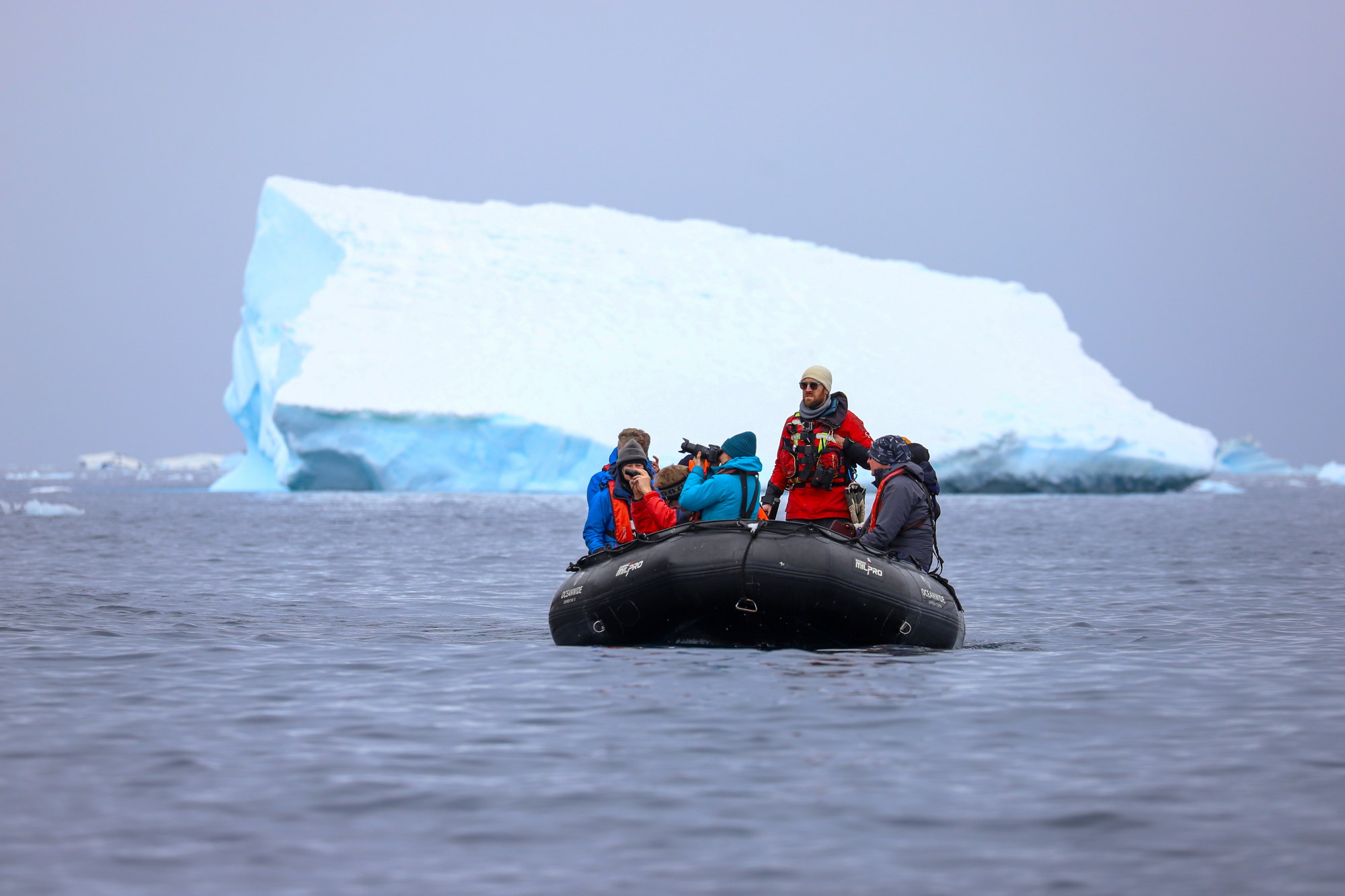
It’s important to note that no tour operator can guarantee landings. Everything depends on the weather. The crew will try their best, but only while ensuring safety. During conversations with guides, I heard stories of trips where, in nearly three weeks, no landing was possible — a rare case at the very start of the season when the weather is less stable. There were also tragic incidents when sudden weather changes left zodiacs unable to return safely to the ship. So if the crew says it’s dangerous, it’s best to listen to them rather than insist on a landing at any cost.
Another adventure along the way was iceberg A23A, which broke off in the 1980s and drifted slowly along the coast until recent years. When we encountered it, it was over 70 km long, bigger than London! We spent several hours sailing alongside it. Honestly, such a massive iceberg feels more like an island than an iceberg, so smaller icebergs are often more interesting and photogenic.
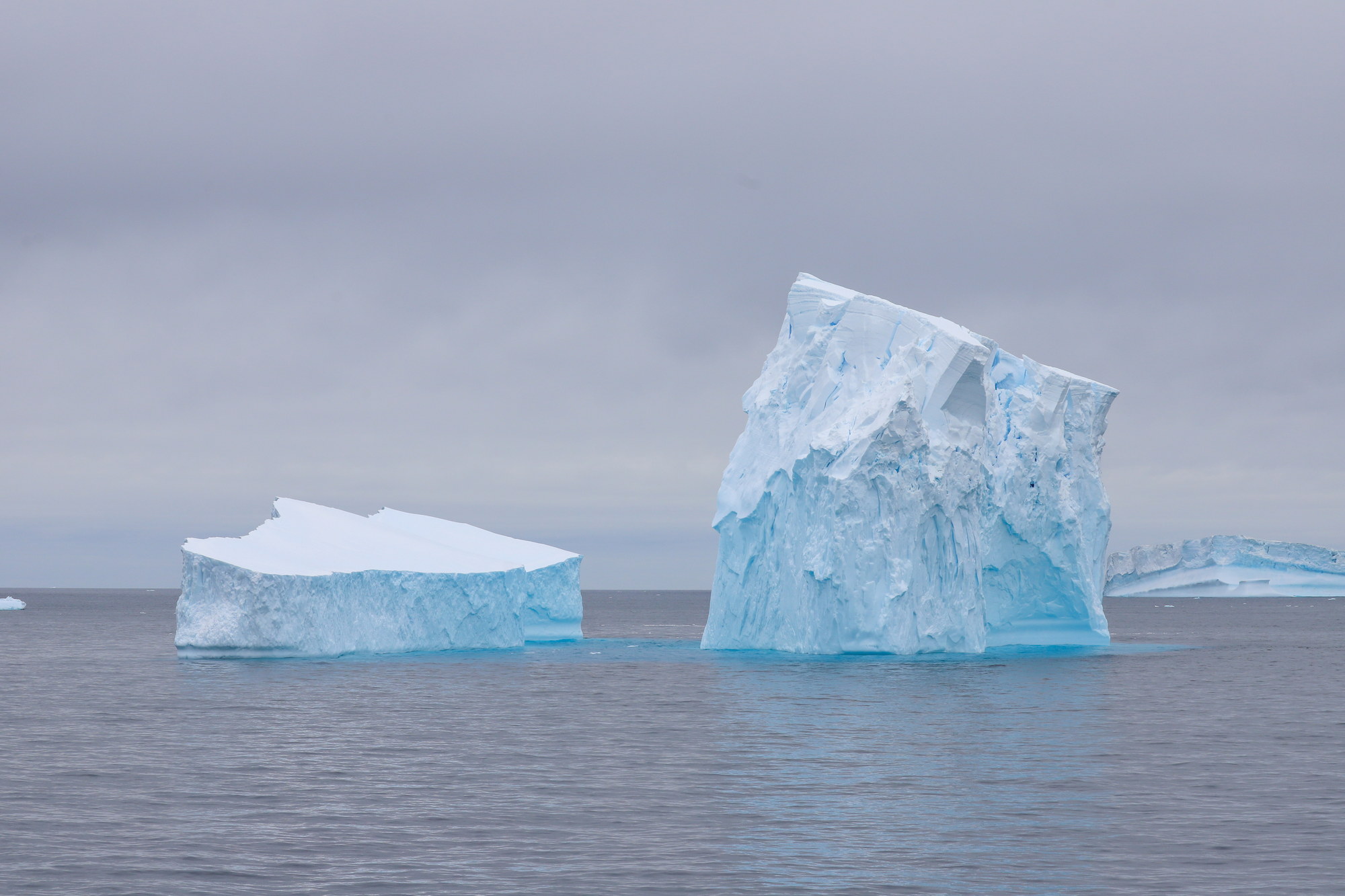
South Georgia
After three days at sea, more icebergs began to appear, and then the mountain peaks emerged. The mountains were, for me, the biggest surprise — I had expected mostly flat terrain or maybe some hills. But here were sharp peaks that literally took your breath away!
South Georgia is stunning with its landscapes, bays, fjords, wildlife, and, of course, icebergs. You don’t want to sleep here — there’s always something happening. Colors change, peaks appear and disappear, a pod of humpback whales sleeps nearby, occasionally spouting, while a group of penguins or playful seals passes by.
We spent several days sailing along South Georgia, entering bays and inlets. Sometimes there was a chance to land, other times we could only observe from the water.
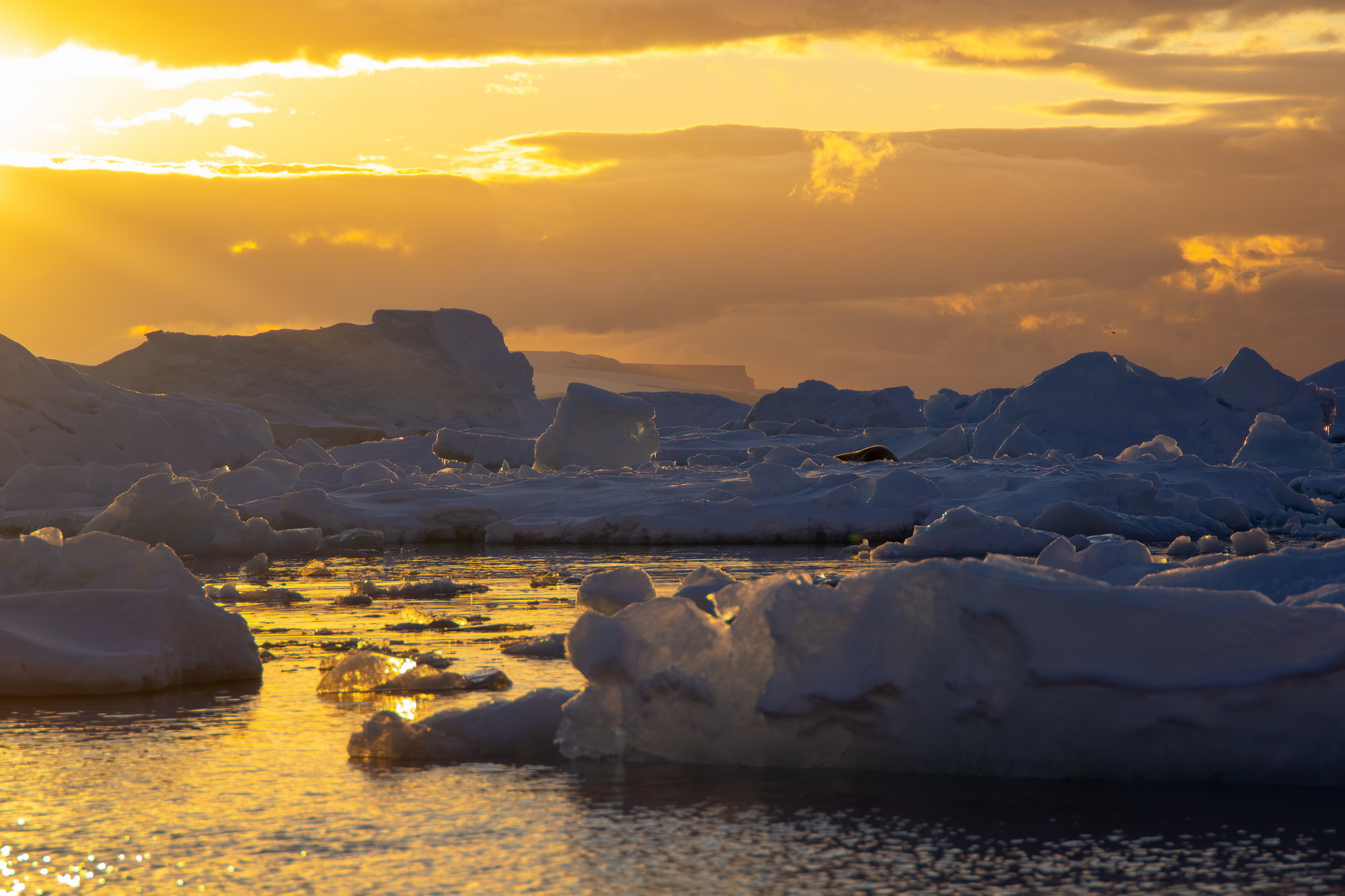
I visited during a year when a bird flu outbreak affected both birds and marine mammals. Many landing sites with infected areas were closed to prevent the disease from spreading further.
Before visiting South Georgia, we had a detailed briefing. On landings, we always wore rubber boots, which were disinfected after each landing. But on South Georgia, the checks were even stricter — our landing clothing was inspected, all pockets checked for seeds, hair, or anything that could introduce invasive plants or disease to the island.
A few years ago, South Georgia managed to eradicate mice and rats that had been introduced by whalers long ago. Without natural predators, they had multiplied and severely reduced the populations of ground-nesting birds. Now the focus is on plants, as introduced species continue to displace native flora.
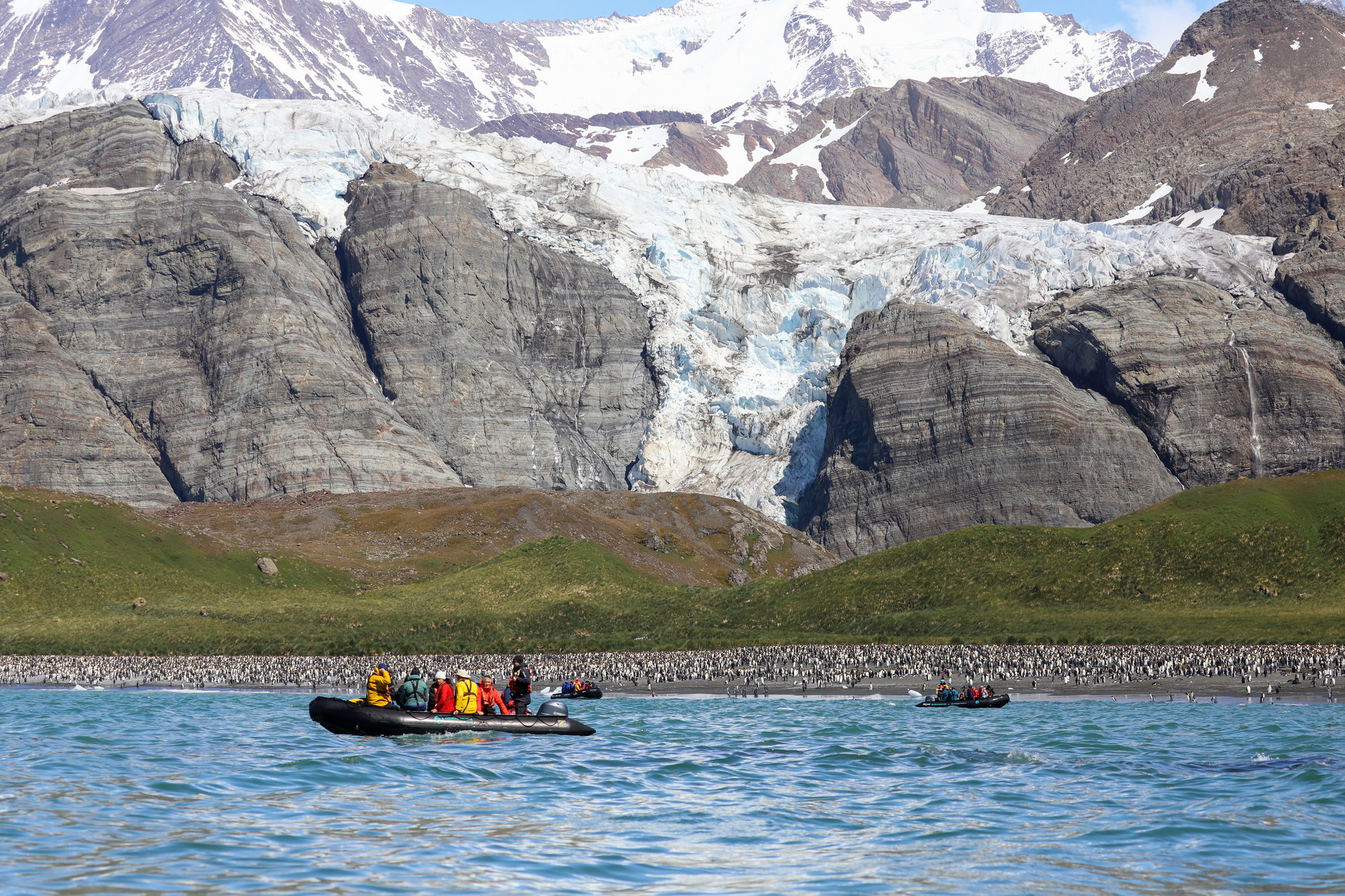
There are a few small settlements on South Georgia — essentially scientific stations, with no permanent population. We landed and walked around Grytviken, which is a common stop for cruises. It has a small cemetery where the famous Antarctic explorer Ernest Shackleton is buried.
After South Georgia, it’s two days to the Falkland Islands, with plenty of time to learn interesting facts about Antarctic history.
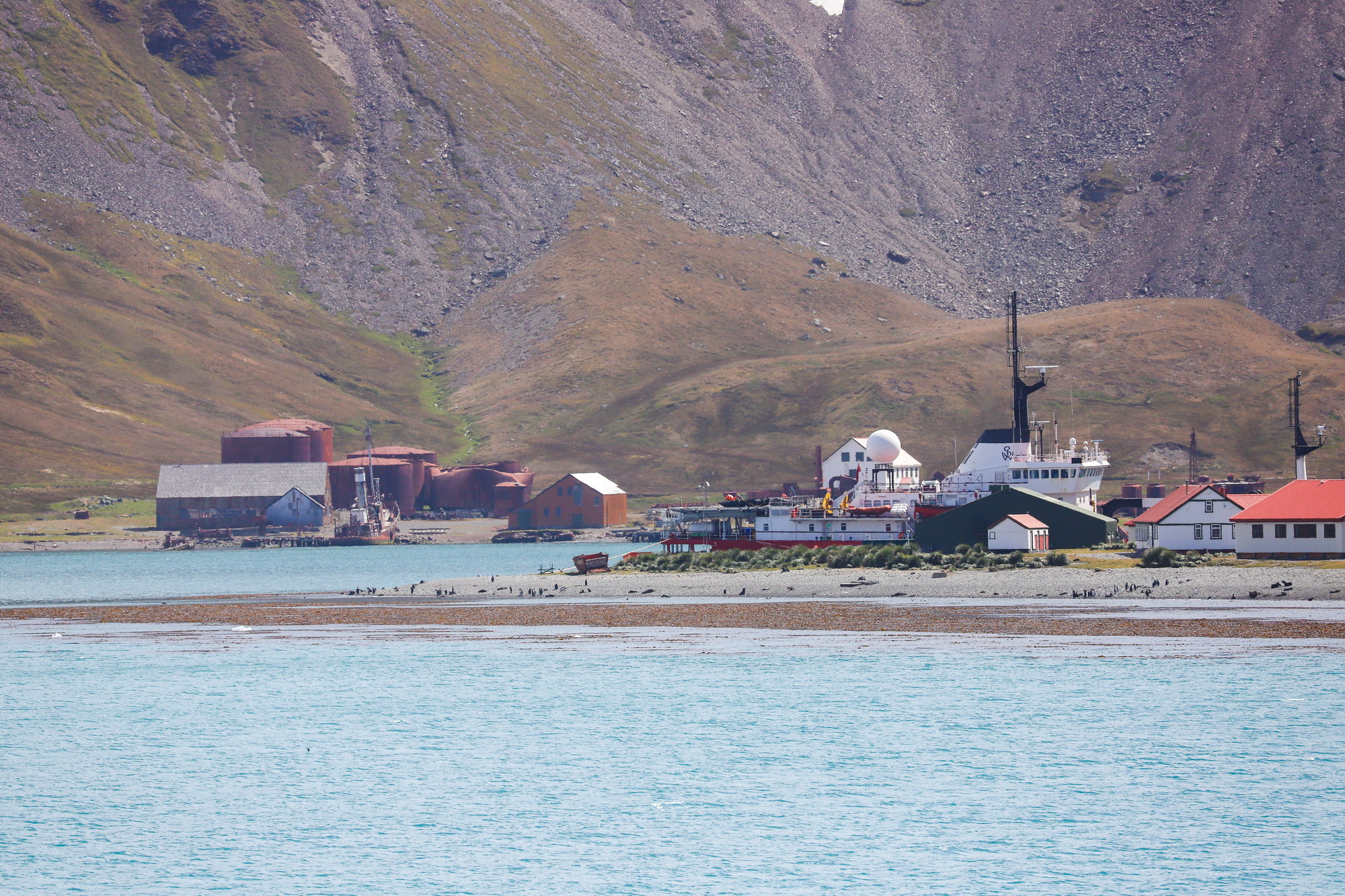
One incident on South Georgia reminded us to always be prepared. One zodiac approached the shore too closely and hit a breaking wave. A brief engine hiccup caused the boat to be thrown onto the shore, waves splashing in. About 30 cm of water filled the boat, people got soaked, and one camera was lost (fortunately, it was a spare). All because the camera had been left in a regular backpack on the floor, even though everyone was provided dry bags.
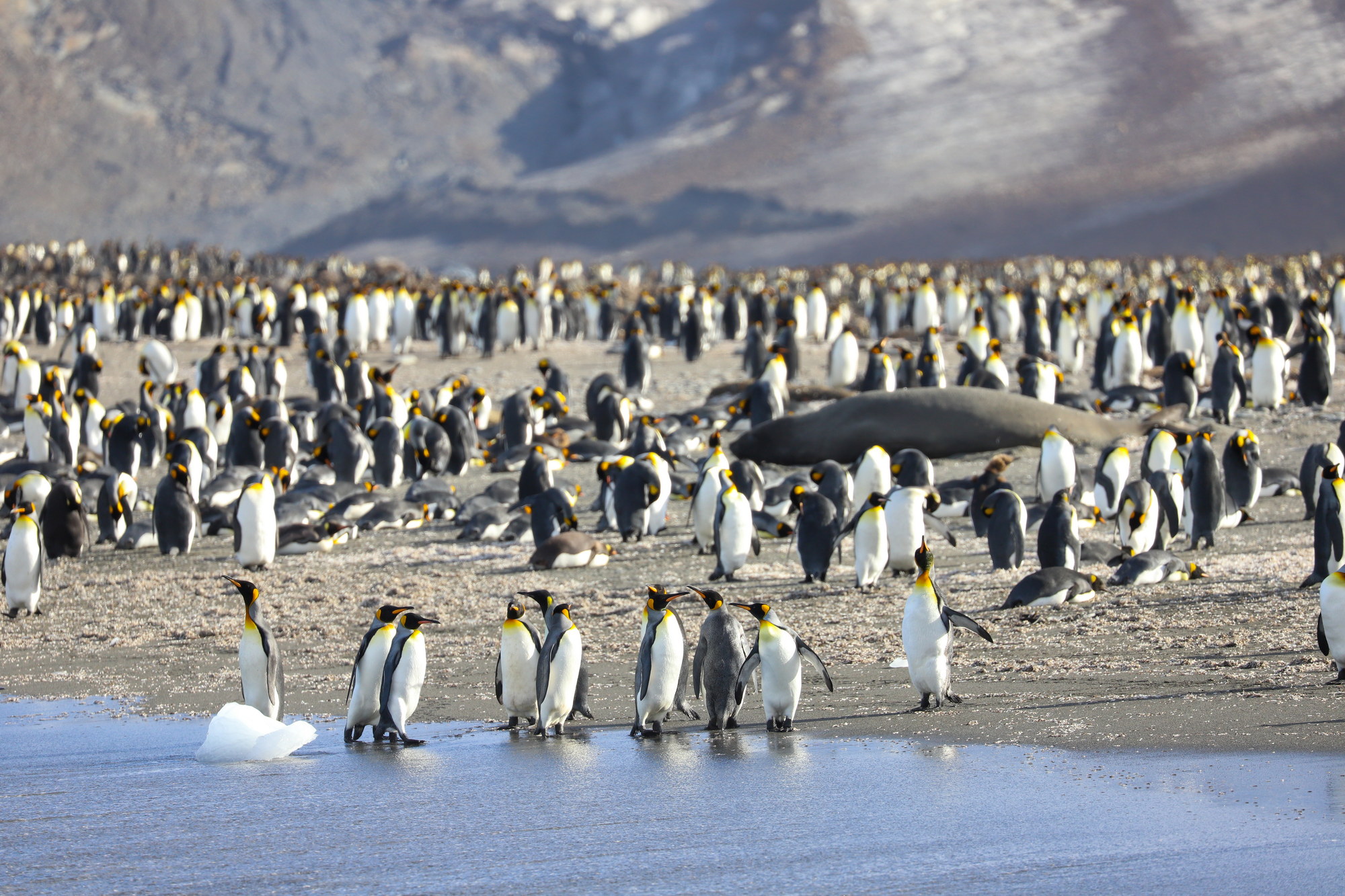
Falkland Islands (Malvinas)
For Argentina, these are the Malvinas Islands; for the UK, they are overseas territories. Not long ago, there was a war over these islands. They remain under British control, using the British pound, but tensions could flare up again.
The Falklands are famous among travelers and nature lovers for their bird colonies. Here you can see penguins, albatrosses, cormorants, and many smaller birds.
This was the first place on our trip where we saw albatrosses on land, near their nests. We were close to a colony of black-browed albatrosses. They are not the largest albatross species, but their wingspan reaches 2–2.5 meters. Imagine such a massive bird just five steps away! Even the chicks looked larger than adult Rockhopper penguins.
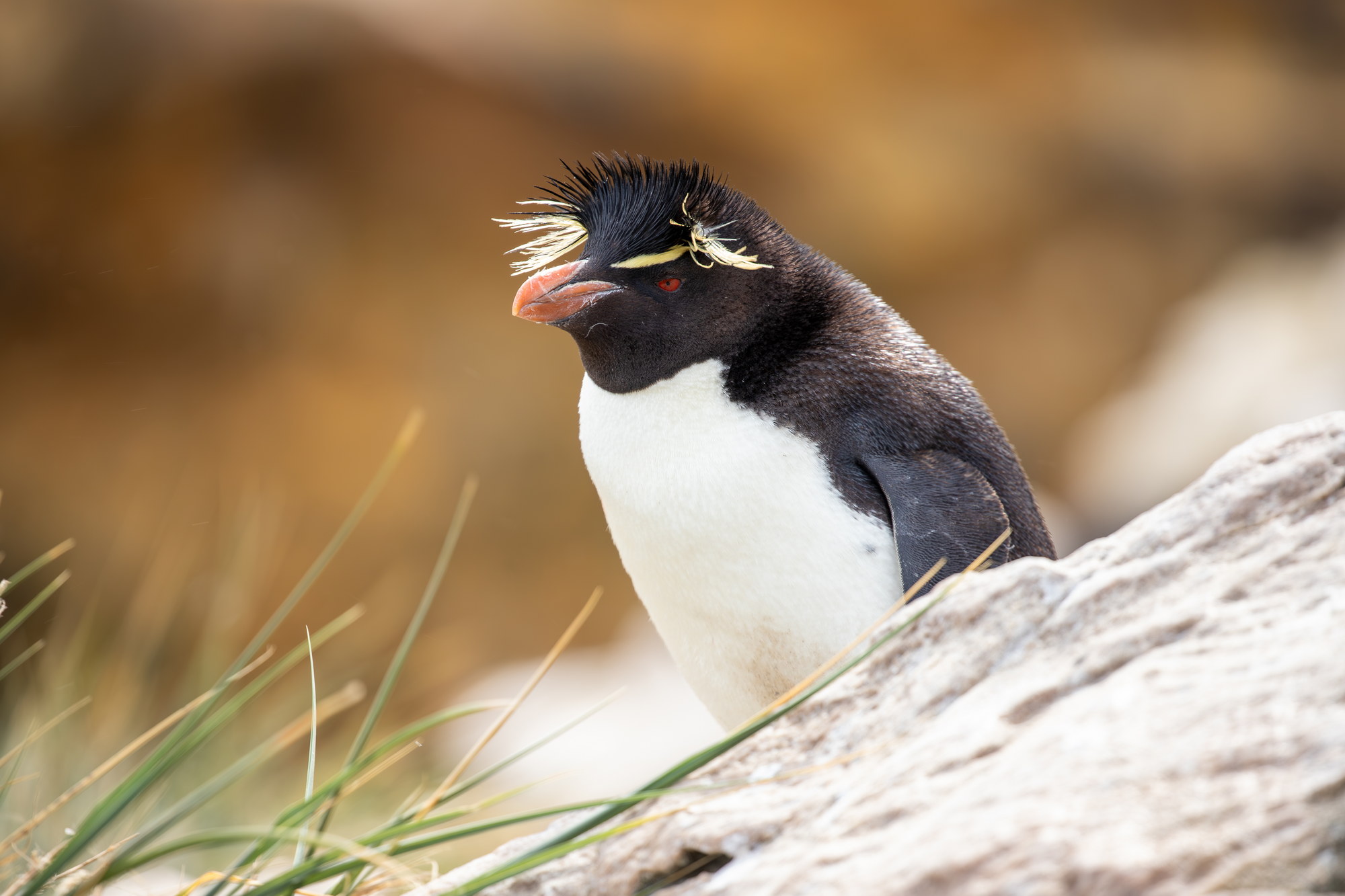
On the Falklands, we also experienced the rapid weather changes — though in our case, it was mainly wind. While walking on a white sandy beach surrounded by penguins, the guides suddenly started talking actively over radios, and then announced: “We are returning — the wind is increasing.”
Organizing 100 people to return to the zodiacs is no simple task. Over the beach ridge, the wind seemed moderate, but in the bay, the waves were strong. Normally, landings are simple: you step into the water in rubber boots, then climb into the zodiac. But with these waves, boarding was tricky — the boat was bouncing almost a meter up and down, so you had to time your move perfectly.
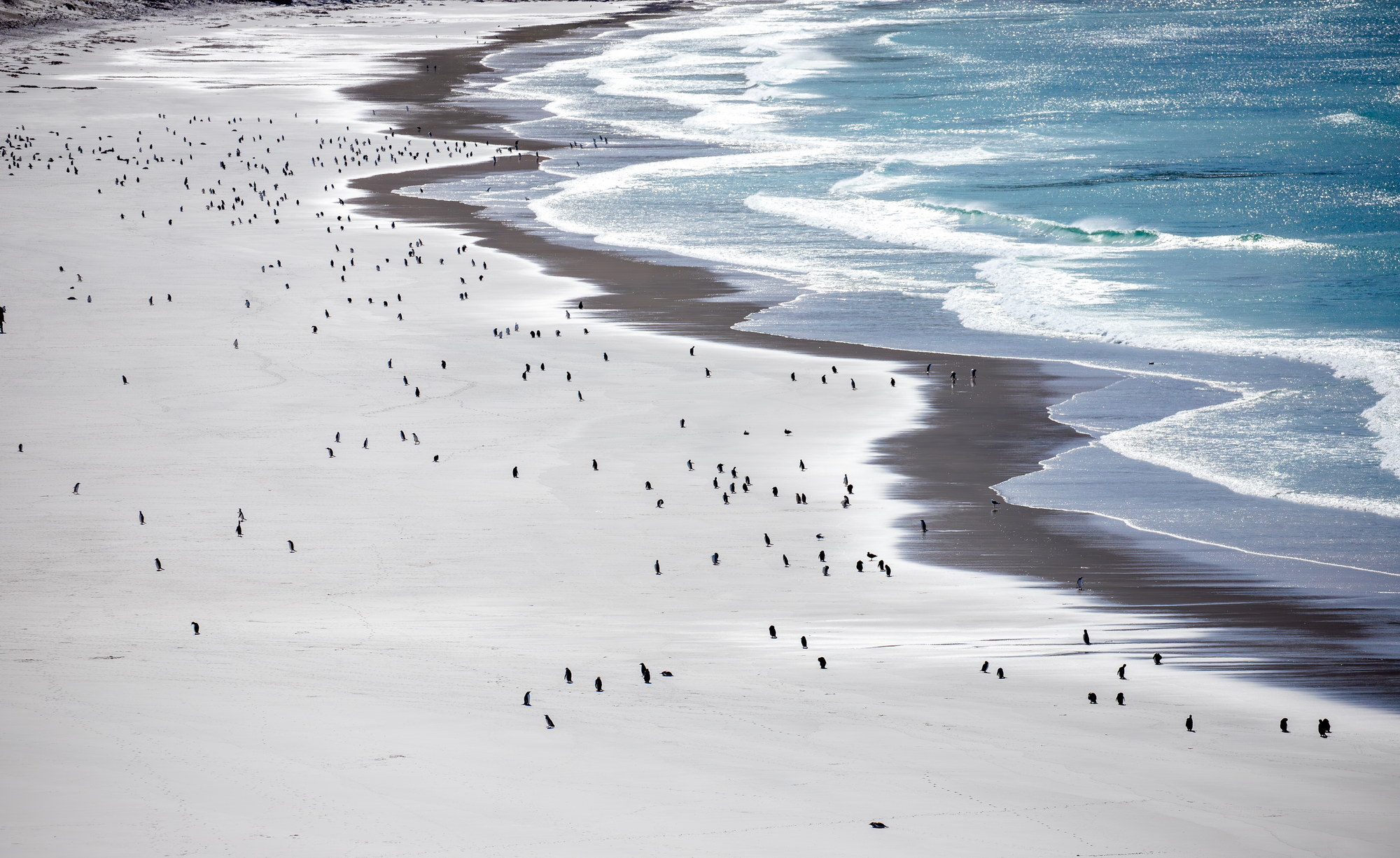
For a healthy young person, it’s manageable, but Antarctic cruises tend to have an older average age — the company I sailed with mentioned a mean age of 65. This is when the guides practically lift tourists into the zodiacs.
And then the waves hit — they didn’t look high, but in a small boat, they throw you around and splash freezing water. Protecting your camera is essential — we were given waterproof bags, though personal ones also work.
Finally, stepping onto the ship’s small platform is tricky too, with the zodiac bouncing up and down about a meter relative to it - not exactly comfortable. Meanwhile the sky was blue, the sun was shining, and the scenery was beautiful.
So on Antarctic trips, sunny weather alone isn’t enough — you also need light wind for safe and comfortable landings.
From the Falklands to Ushuaia, it’s just over a day, and the forecast predicted a small storm. I was a bit excited — it wouldn’t be fun if everything went perfectly smoothly! Unfortunately (or fortunately) we passed through it with minor rocking, but overall, it was calm.
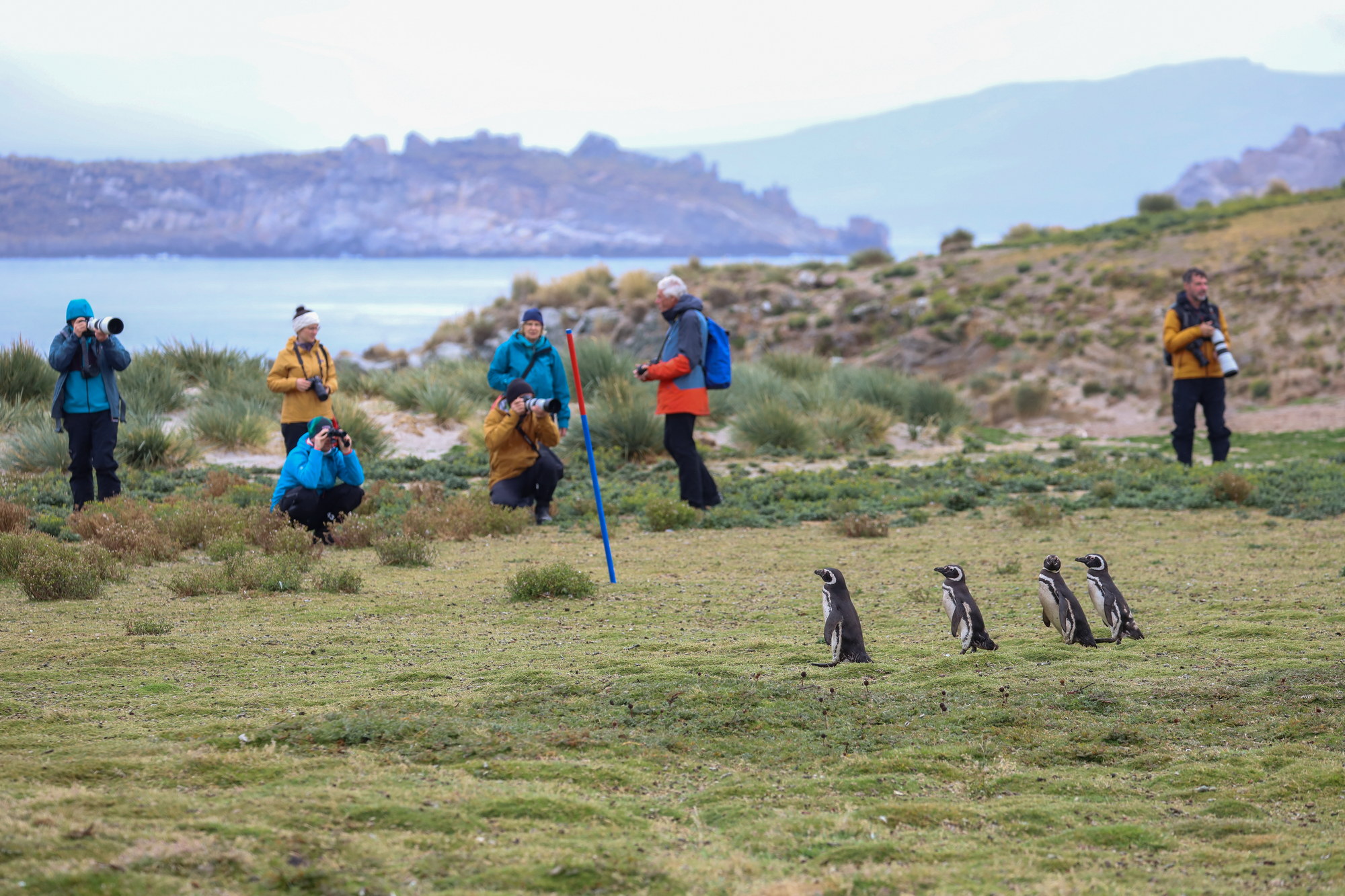
Back in the Beagle Channel, dolphins appeared along the coastline. Ships are escorted through the channel, and our guide was already waiting.
The last celebratory dinner followed — champagne, the captain’s words, and a mention of the “polar bug”: once you visit polar regions, you catch the travel bug! (I had already been to the Arctic, now Antarctica — and I want more! So looks like I’m infected…)
The next morning, we arrived in Ushuaia. Most passengers flew home with connections, while some, like me, continued onward — I was heading into Argentine Patagonia, but that’s another story.
